Chapter 20 HW
1/83
There's no tags or description
Looks like no tags are added yet.
Name | Mastery | Learn | Test | Matching | Spaced |
|---|
No study sessions yet.
84 Terms
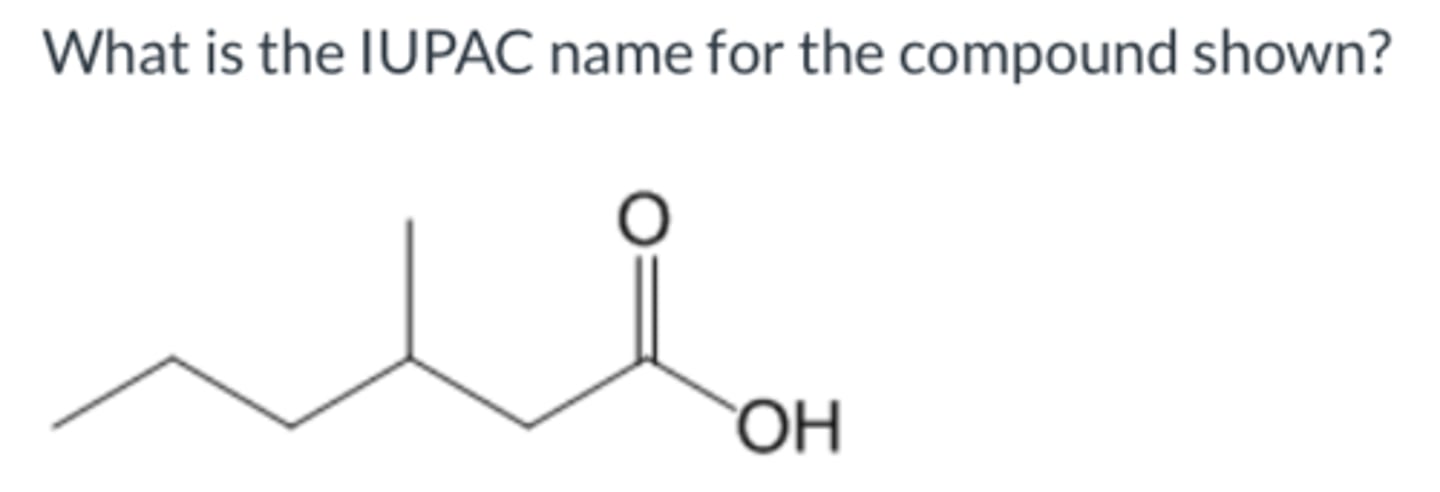
What is the IUPAC name for the compound shown?
3-methylhexanoic acid

What is the common name for the compound?
B-flourobutanoic acid
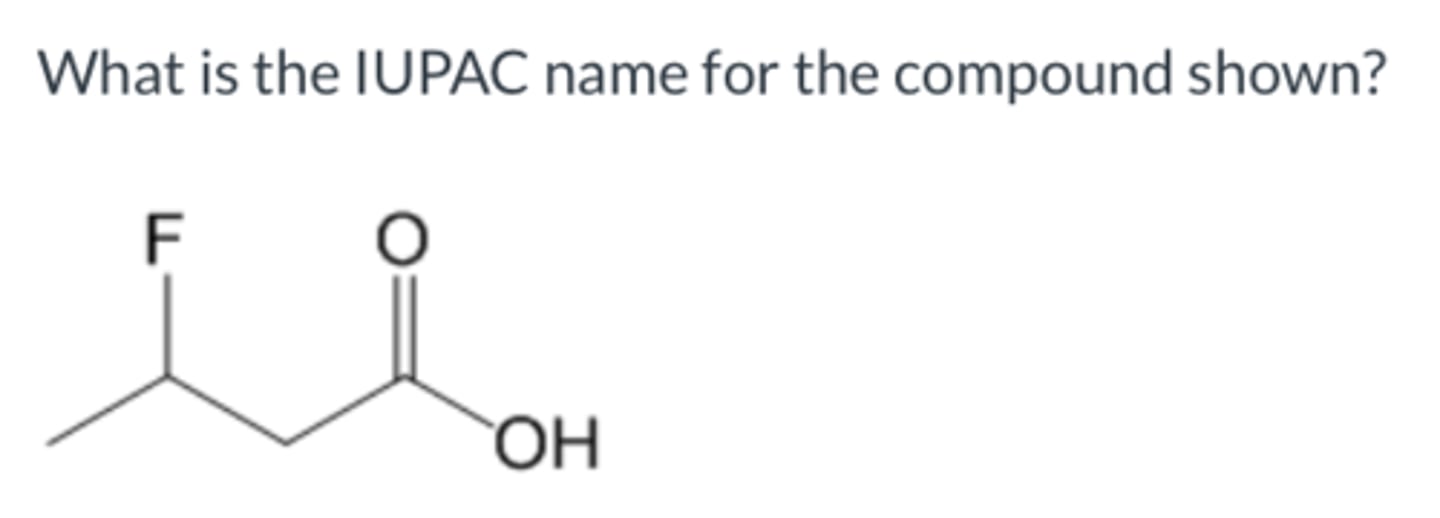
What is the IUPAC name for the compound shown?
3-flourobutanoic acid

What is the IUPAC name for the compound shown?
3,5-dimethylheptanedioic acid
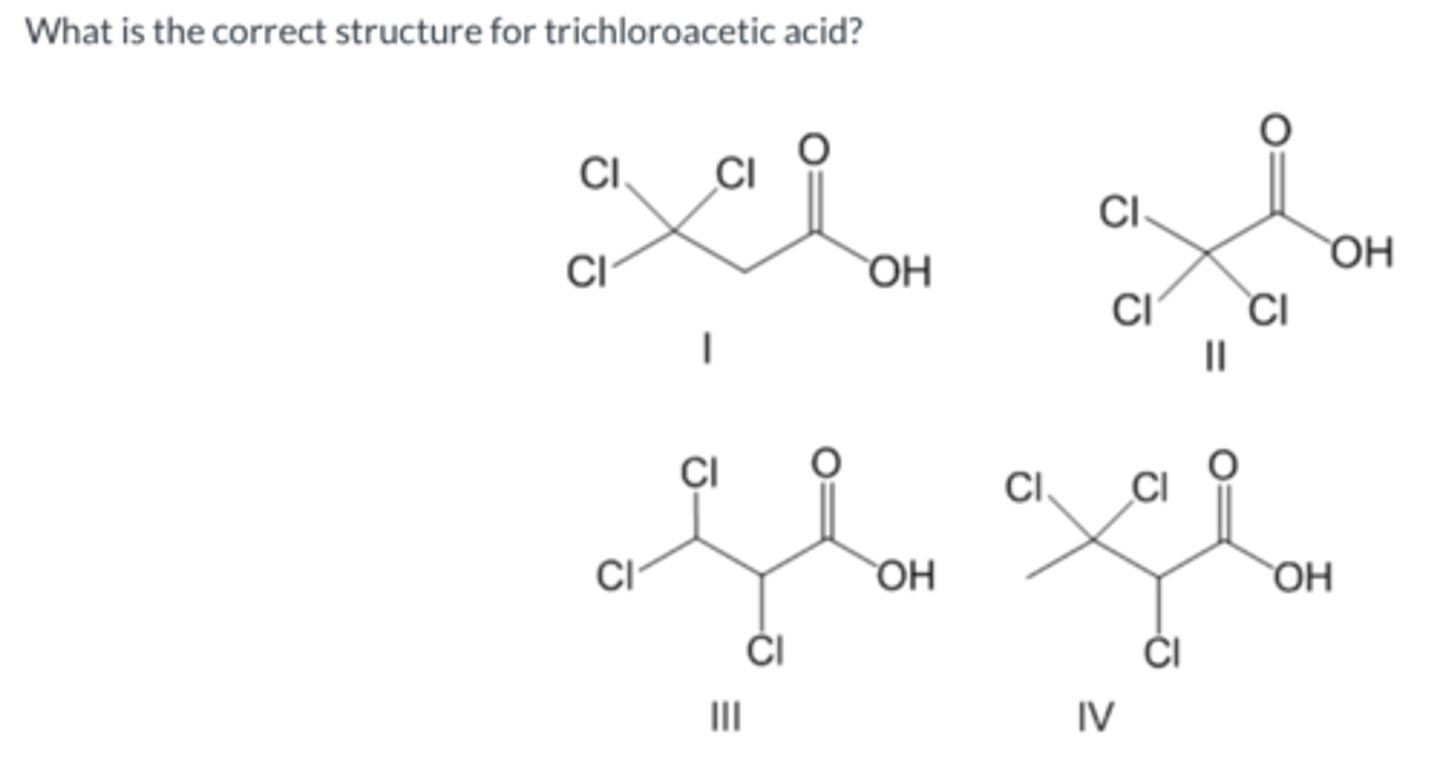
What is the correct structure for trichloroacetic acid?
II
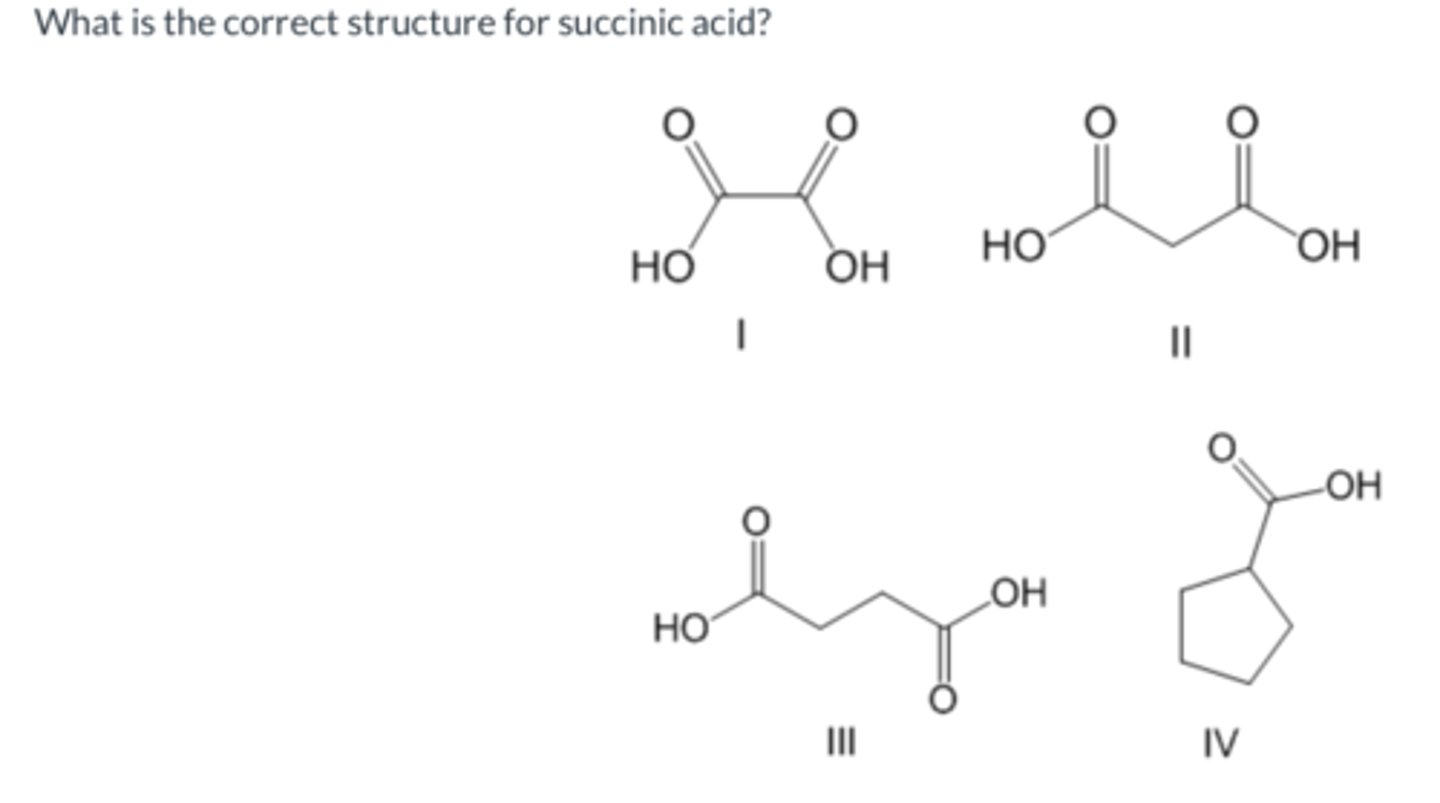
What is the structure for succinic acid?
III
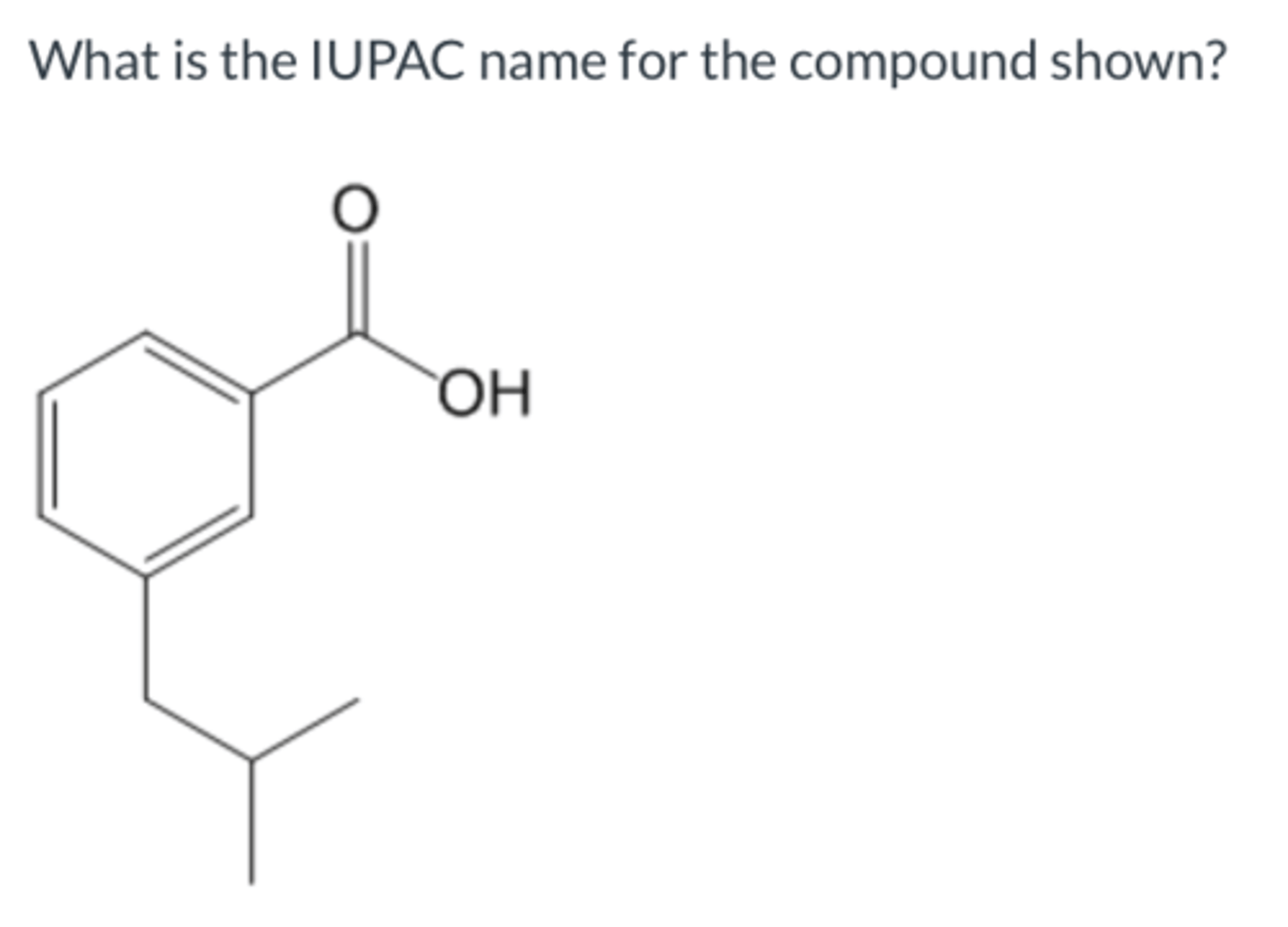
What is the IUPAC name for the compound shown?
3-isobutylbenzoic acid
Methanoic acid is most commonly known as ________.
formic acid
Ethanoic acid commonly known as _________.
acetic acid
What is the IUPAC name for oxalic acid?
ethanedioic acid
What is the IUPAC name for malonic acid?
propanedioic acid
What is the IUPAC name for glutaric acid?
pentanedioic acid
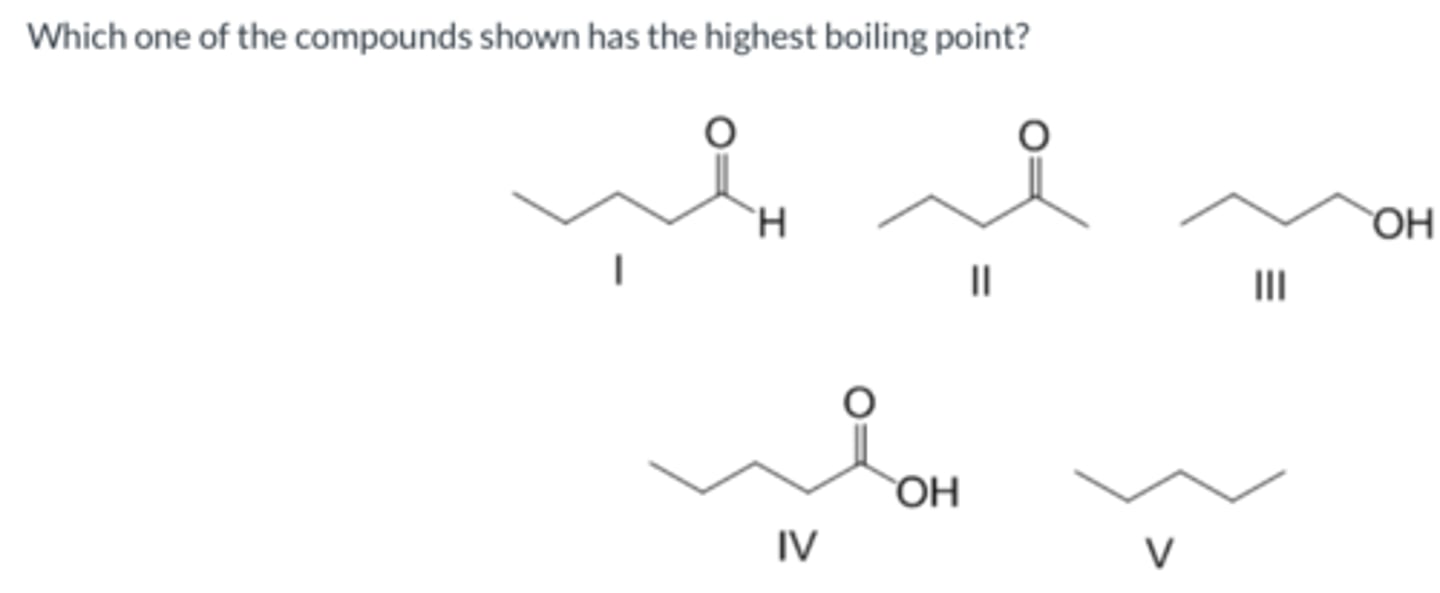
Which one of the compounds shown has the highest boiling point?
IV
Which one of the compounds shown has the highest boiling point?
- butanoic acid
-1-butanol
-2-butanone
-methoxyethane
-butanal
butanoic acid
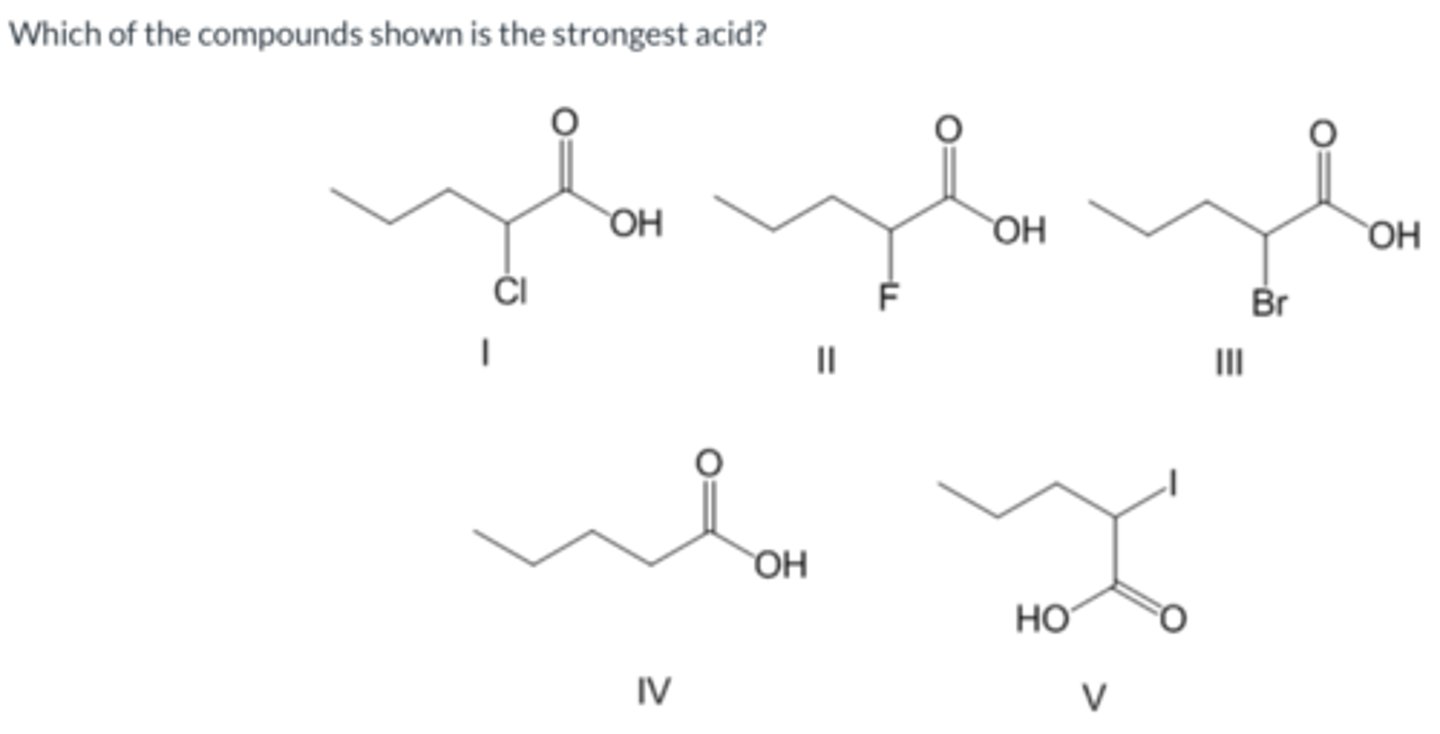
Which of the compounds shown is the strongest acid?
II
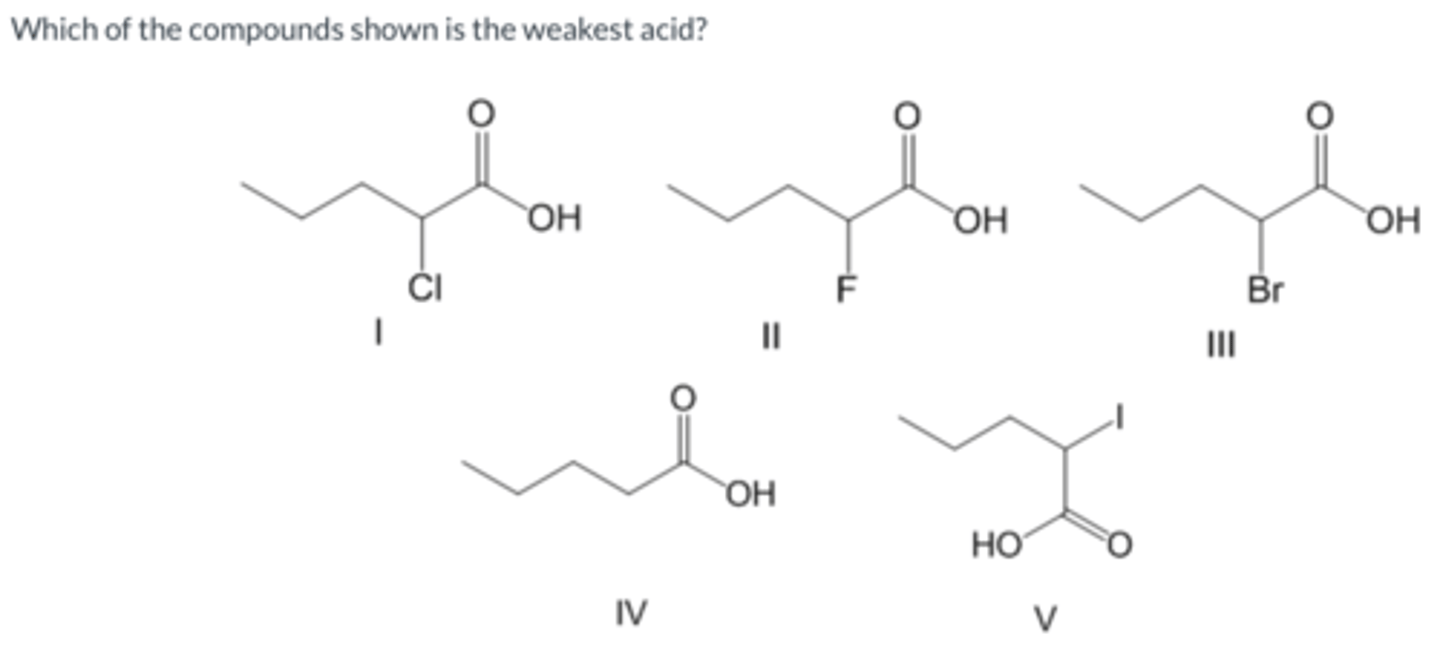
Which of the compounds shown is the weakest acid?
IV
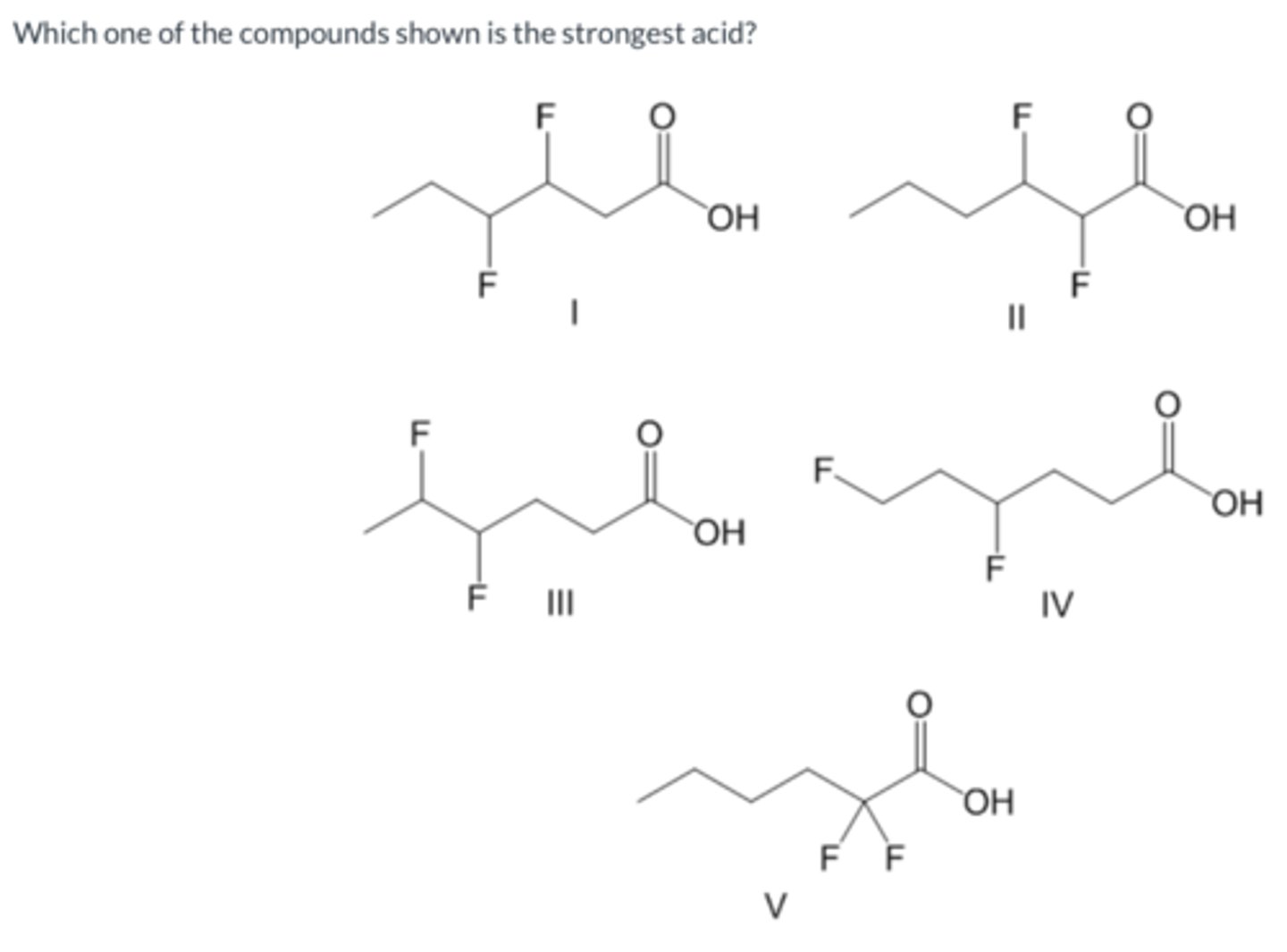
Which one of the compounds shown is the strongest acid?
V
Which of the choices is the strongest acid?
-benzoic acid
-4-nitrobenzoic acid
-4-ethylbenzoic acid
-4-chlorobenzoic acid
-4-hydroxybenzoic acid
4-nitrobenzoic acid
Which one of the choices is the weakest acid?
-benzoic acid
-4-nitrobenzoic acid
-4-ethylbenzoic acid
-4-chlorobenzoic acid
-4-hydroxybenzoic acid
4-hydroxybenzoic acid
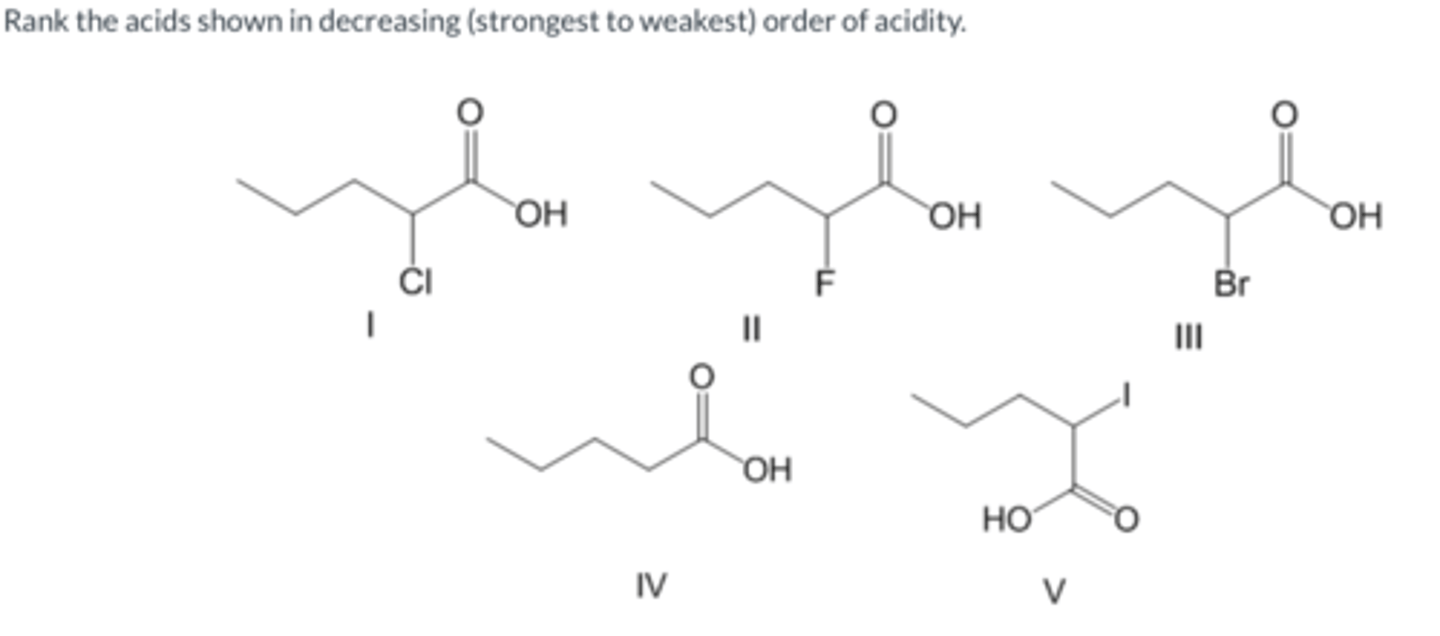
Rank the acids shown in decreasing (strongest to weakest) order of acidity.
II > I > III > V > IV

Rank the acids shown in decreasing (strongest to weakest) order of acidity.
II > IV > III > I
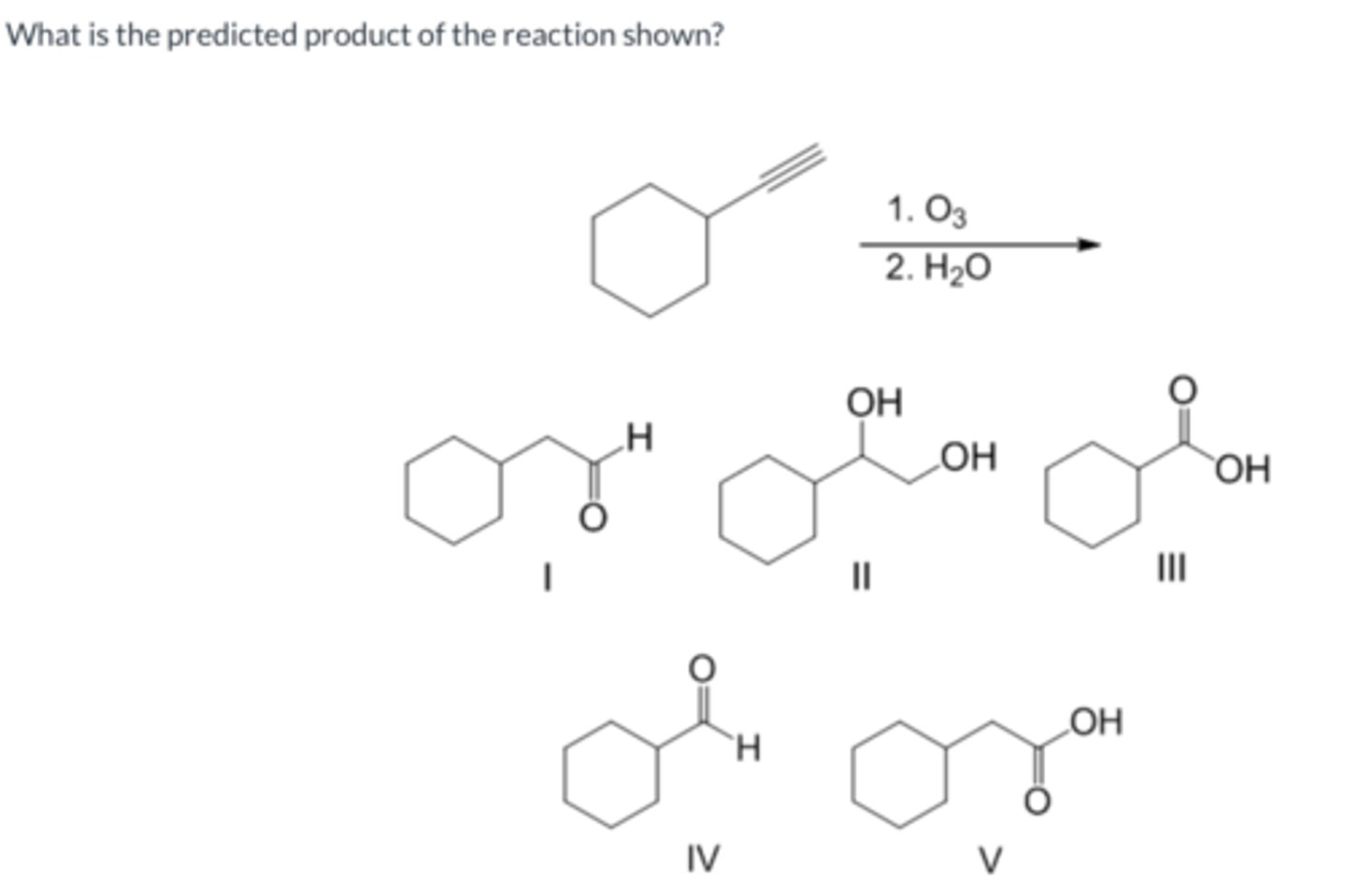
What is the predicted product of the reaction show?
III

What is the predicted product of the reaction shown?
III
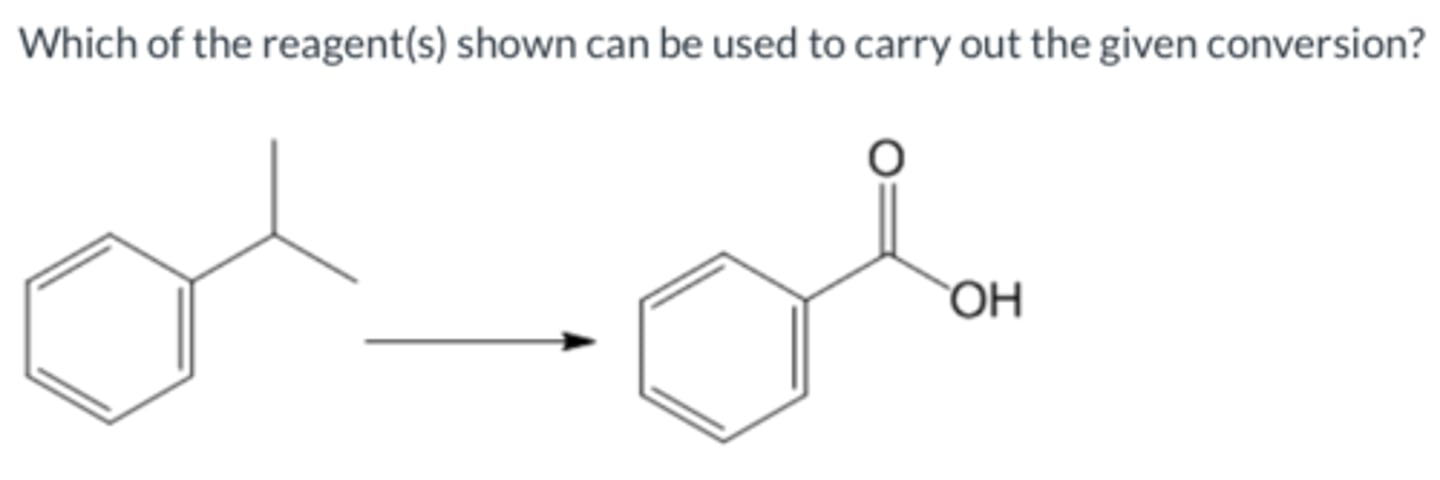
Which of the reagent(s) shown can be used to carry out the given conversion?
Na2Cr2O7/H2SO4/H2O
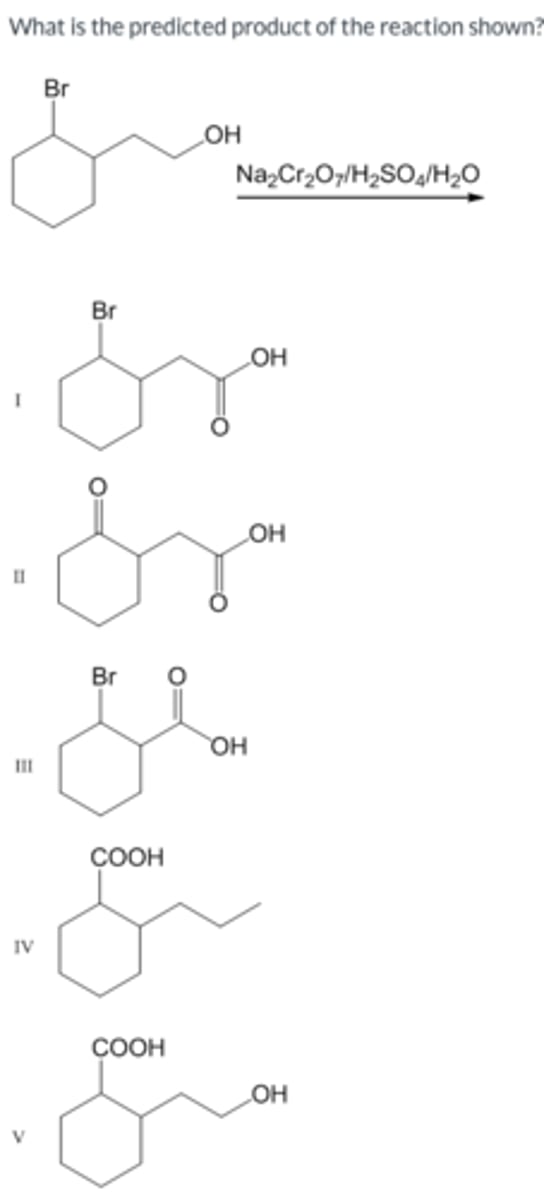
What is the predicted product of the reaction shown?
I
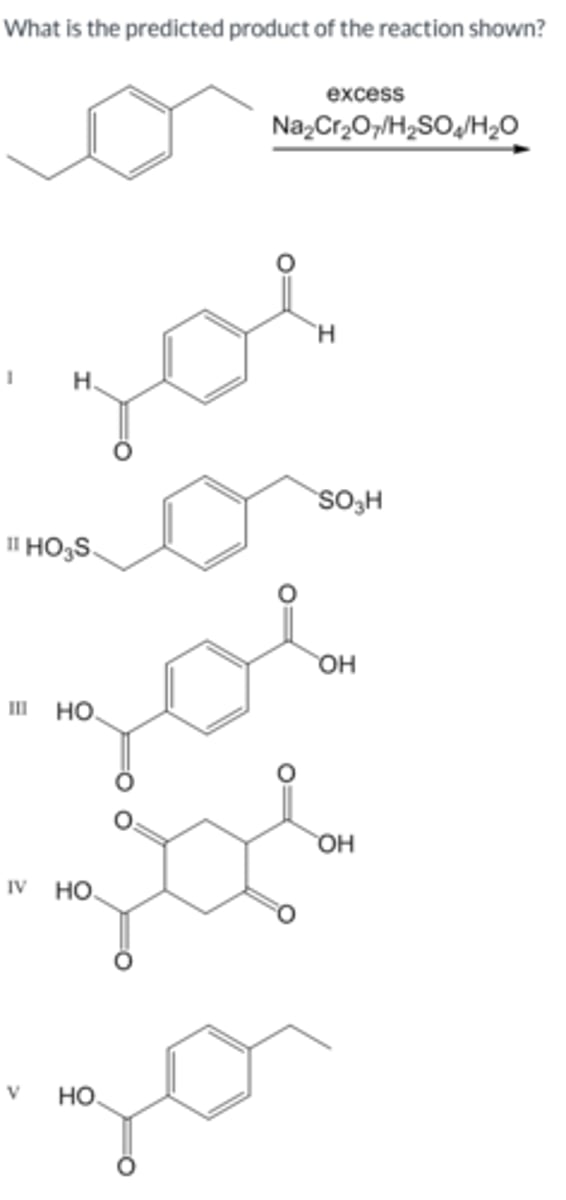
What is the predicted product of the reaction shown?
III
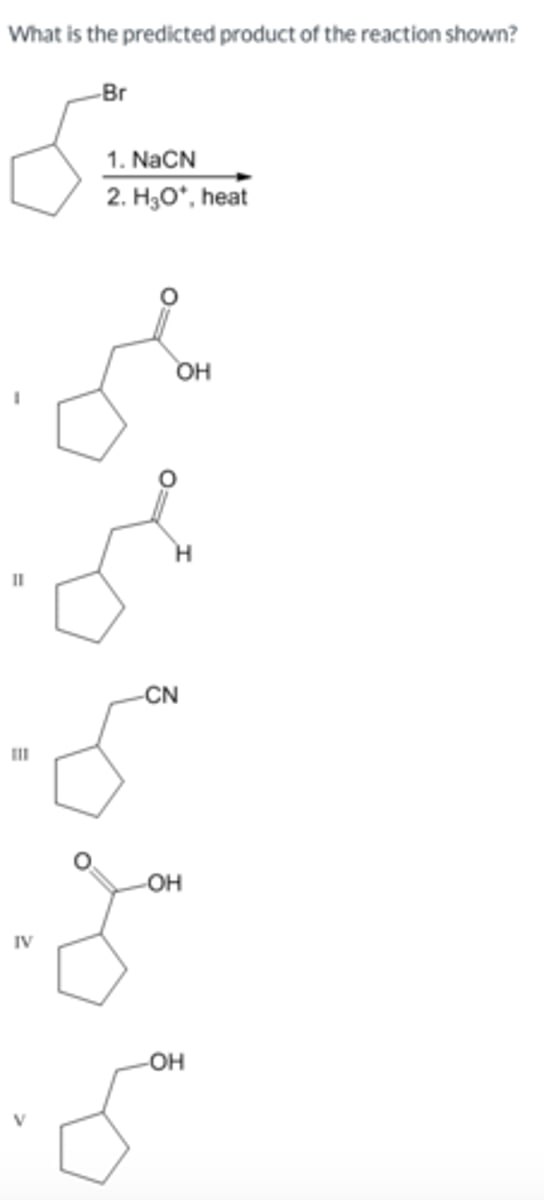
What is the predicted product of the reaction shown?
I
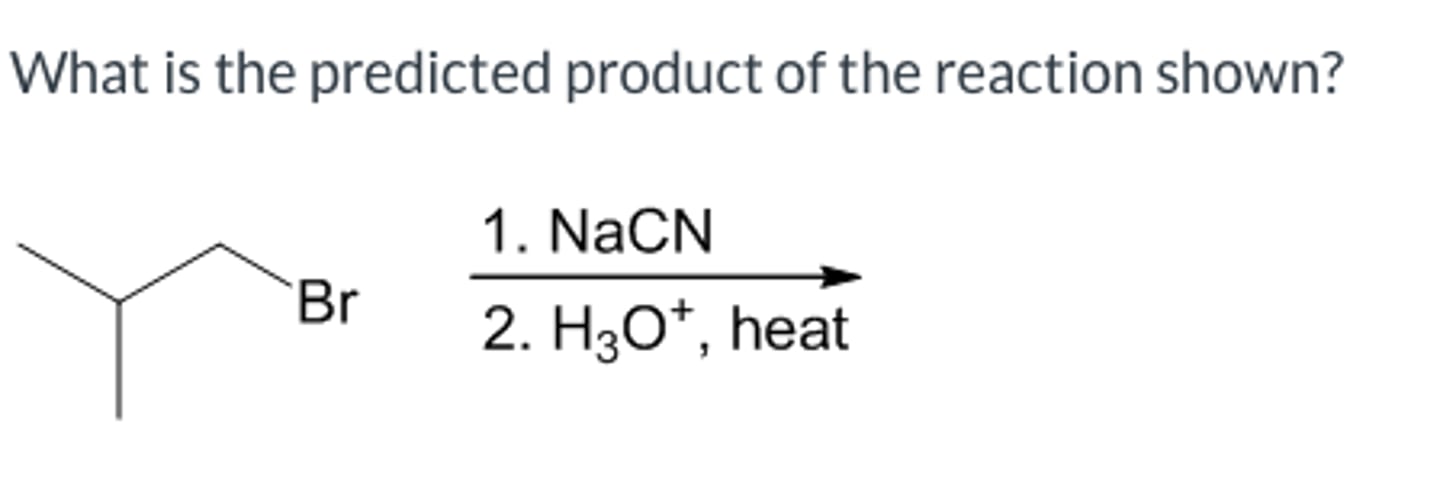
What is the predicted product of the reaction shown?
(CH3)2CHCH2COOH

What is the predicted product of the reaction shown?
2-methyl-1-butanol
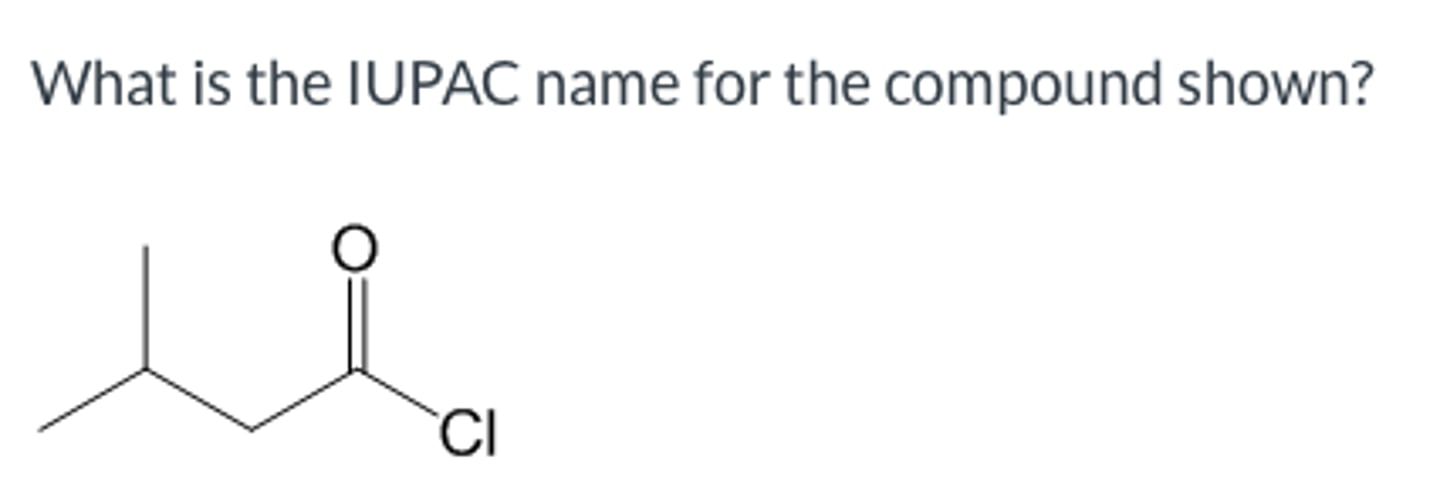
What is the IUPAC name for the compound shown?
3-methylbutanoyl chloride
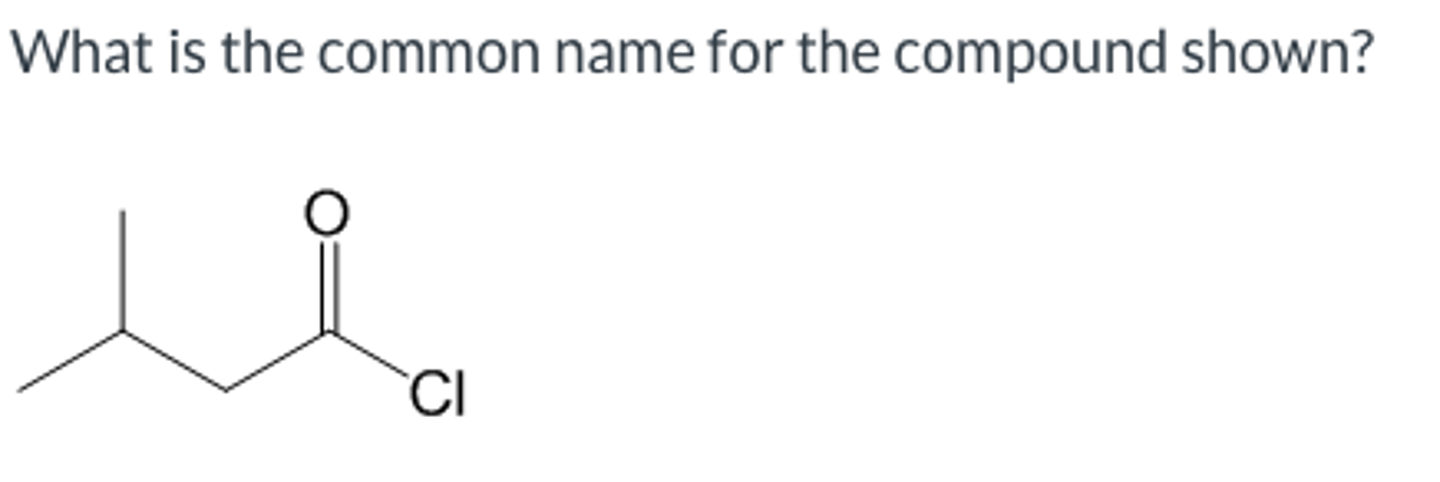
What is the common name for the compound shown?
B-methylbutryl chloride
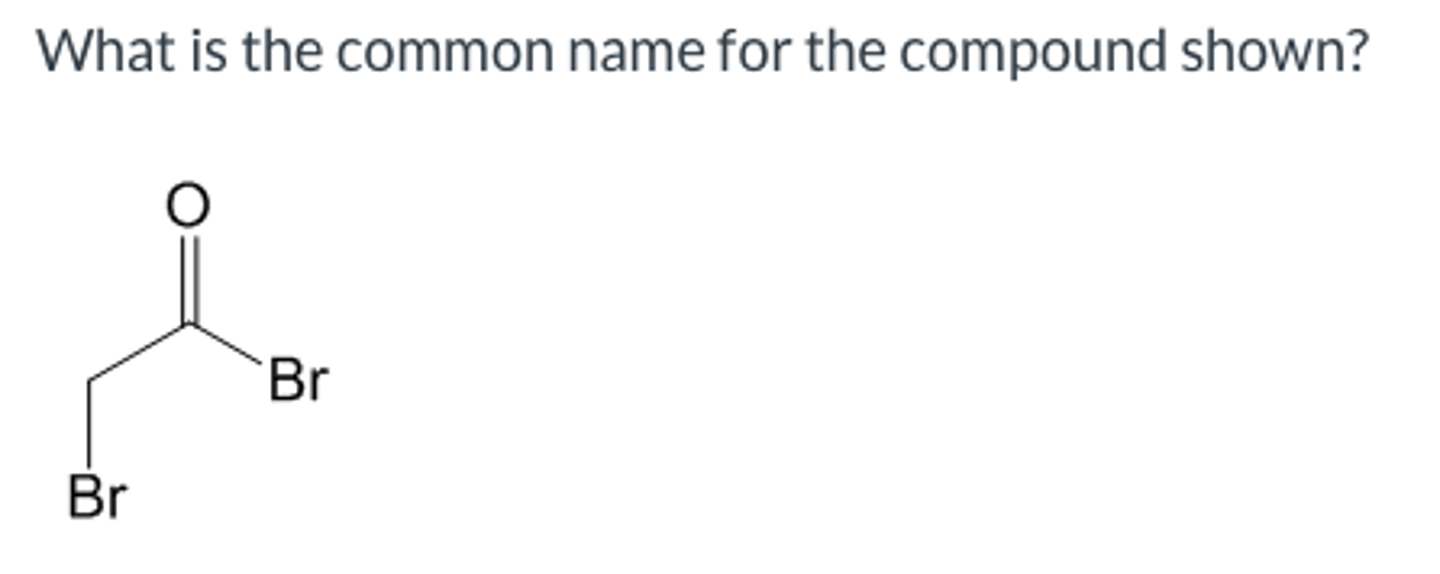
What is the common name for the compound shown?
a-bromoacetyl bromide
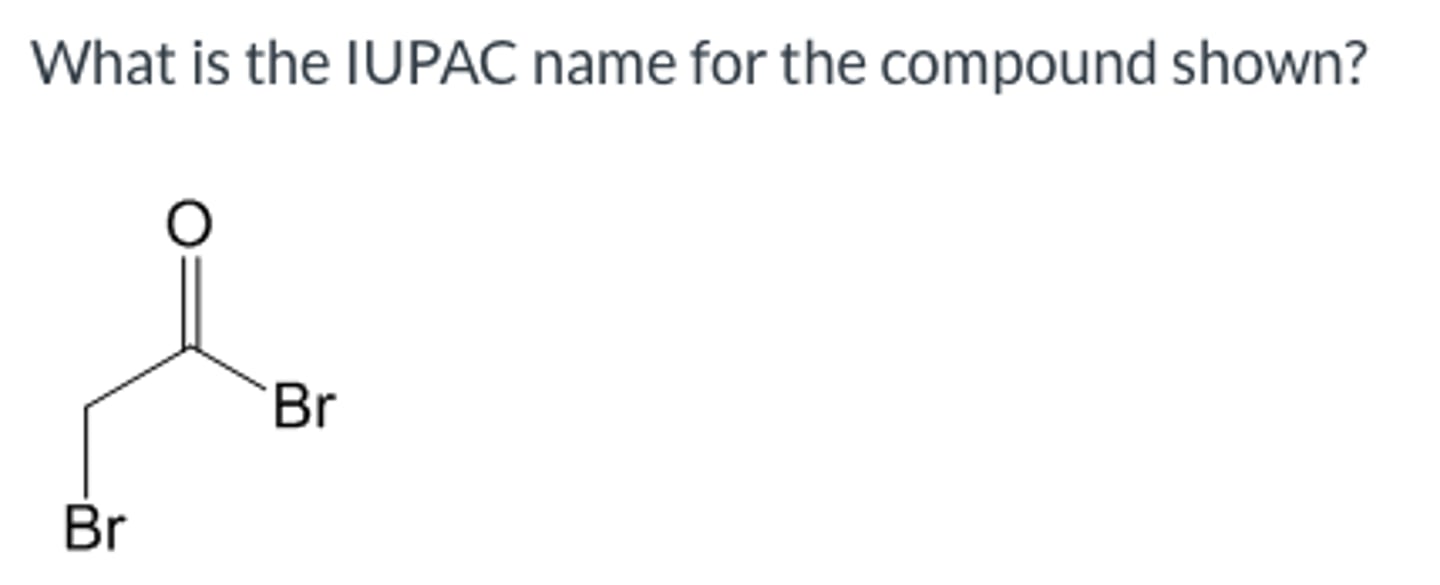
What is the IUPAC name for the compound shown?
bromoethanoyl bromide

What is the IUPAC name for the compound shown?
3-methylhexanoyl chloride
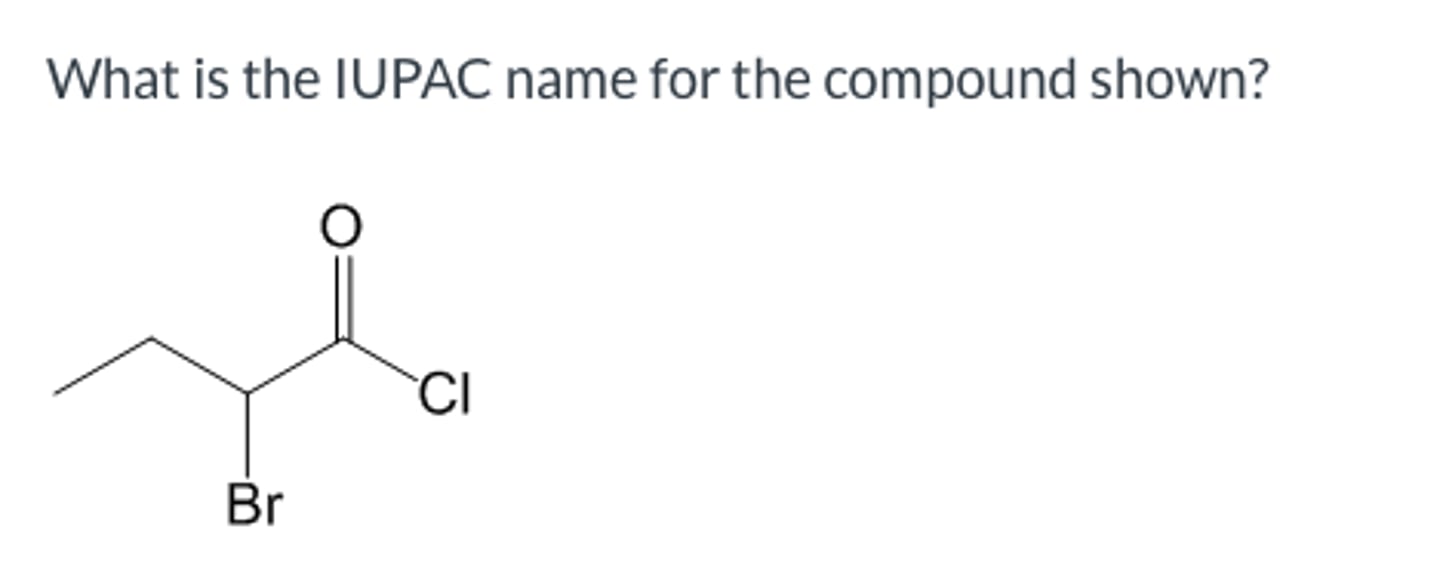
What is the IUPAC name for the compound shown?
2-bromobutanoyl chloride
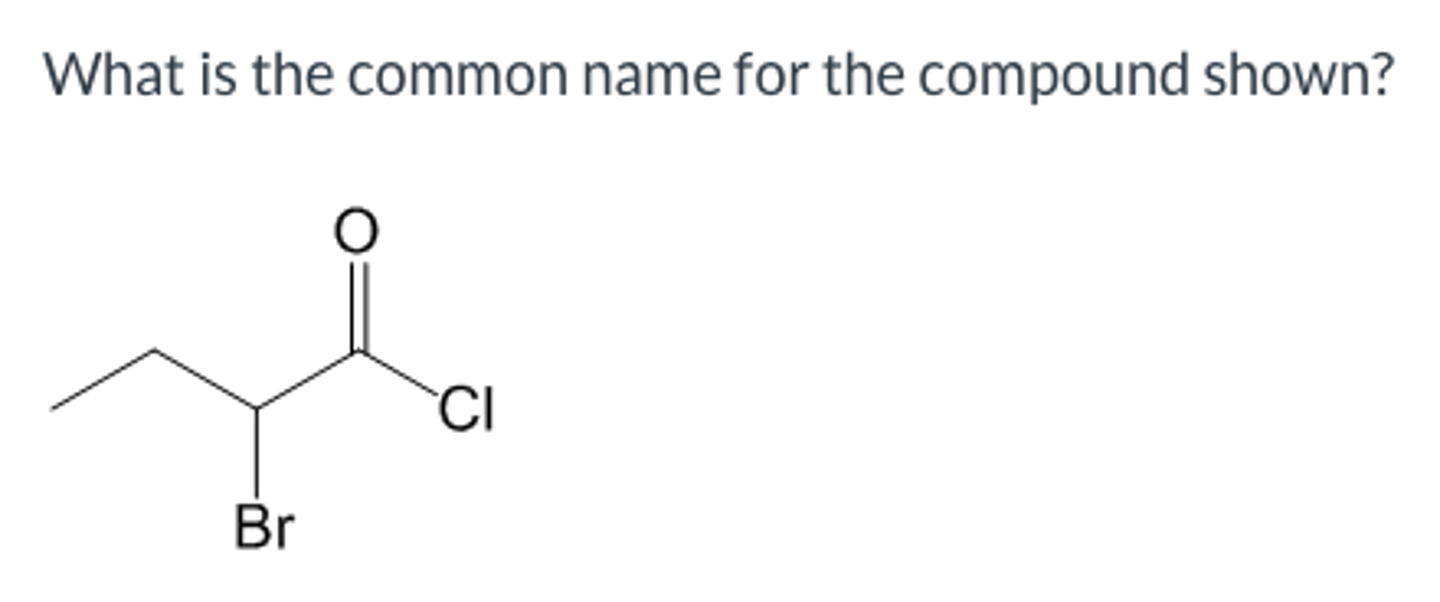
What is the common name for the compound shown?
a-bromobutyryl chloride

What is the IUPAC name for the compound shown?
4-ethyl-3,5-dimethylhexanoyl chloride
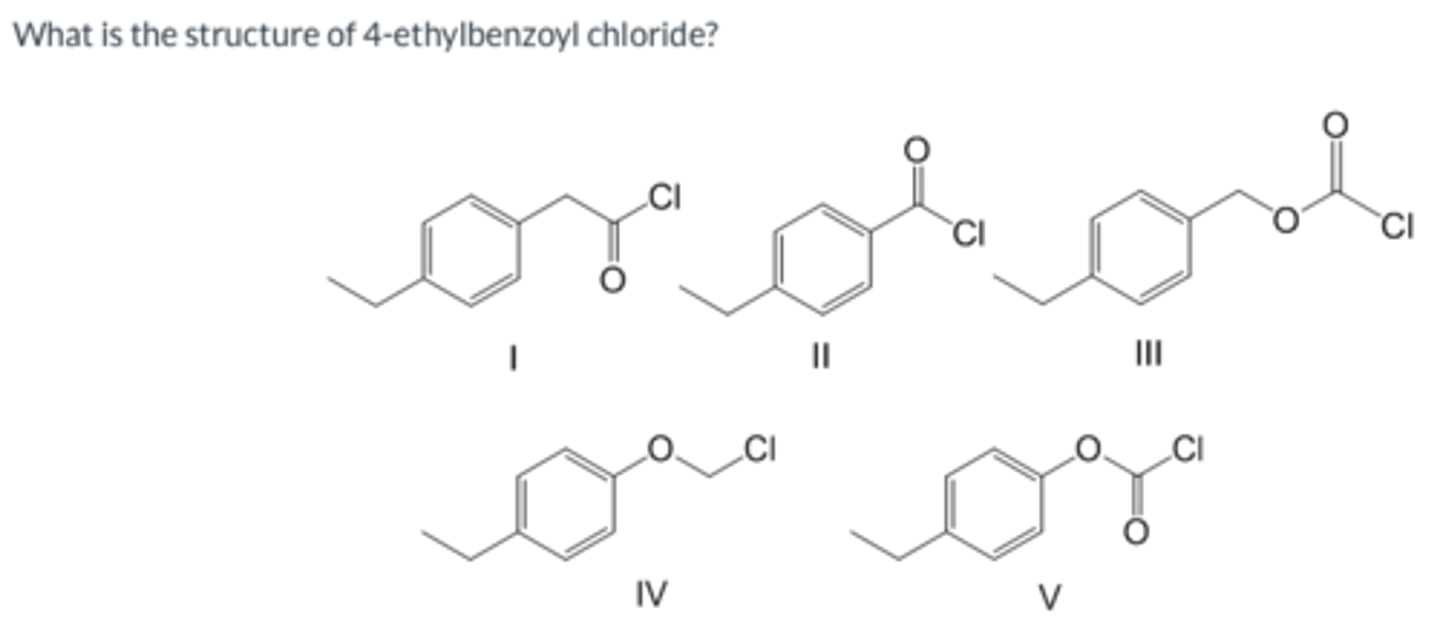
What is the structure of 4-ethylbenzoyl chloride
II
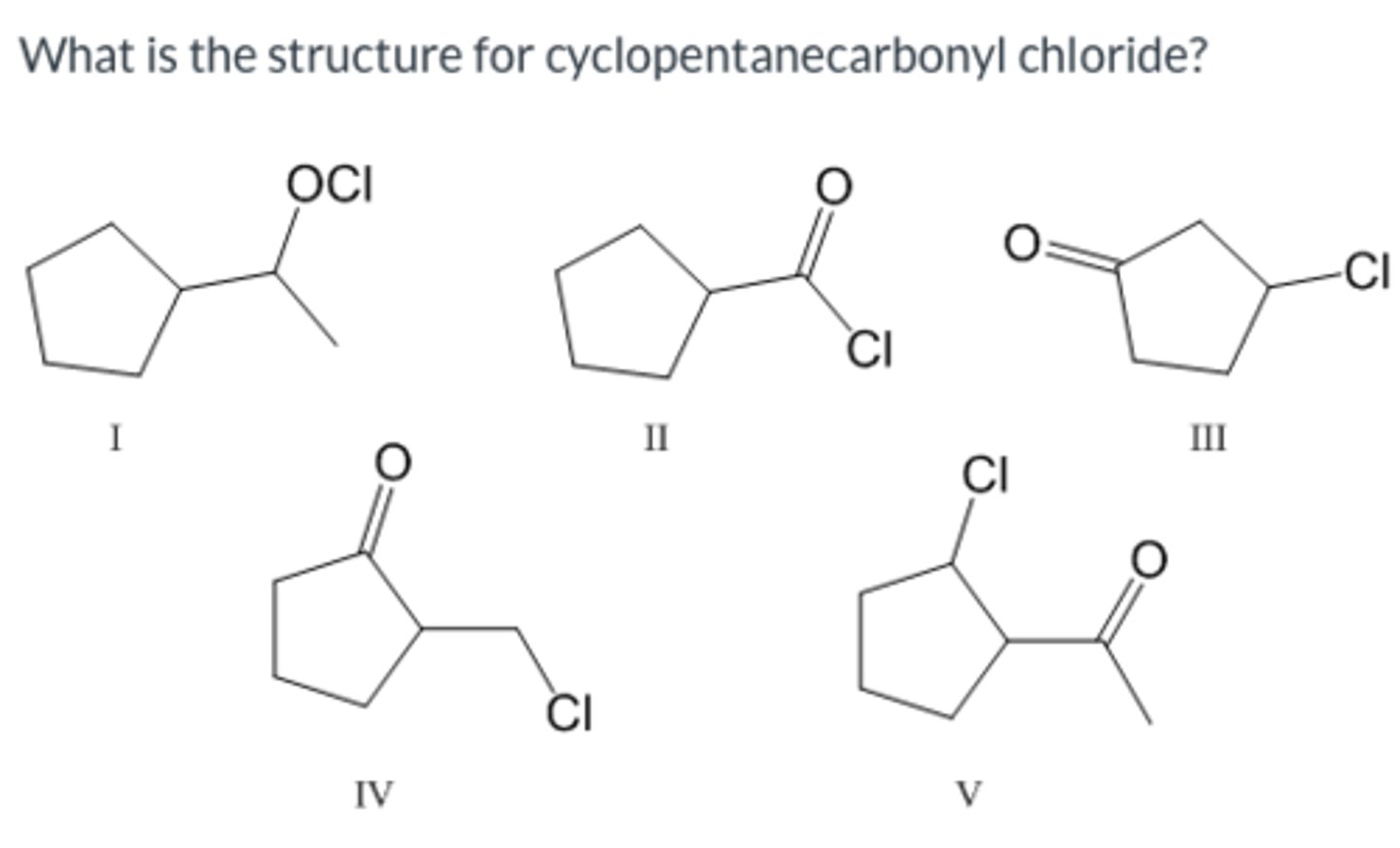
What is the structure for cyclopentanecarbonyl chloride
II
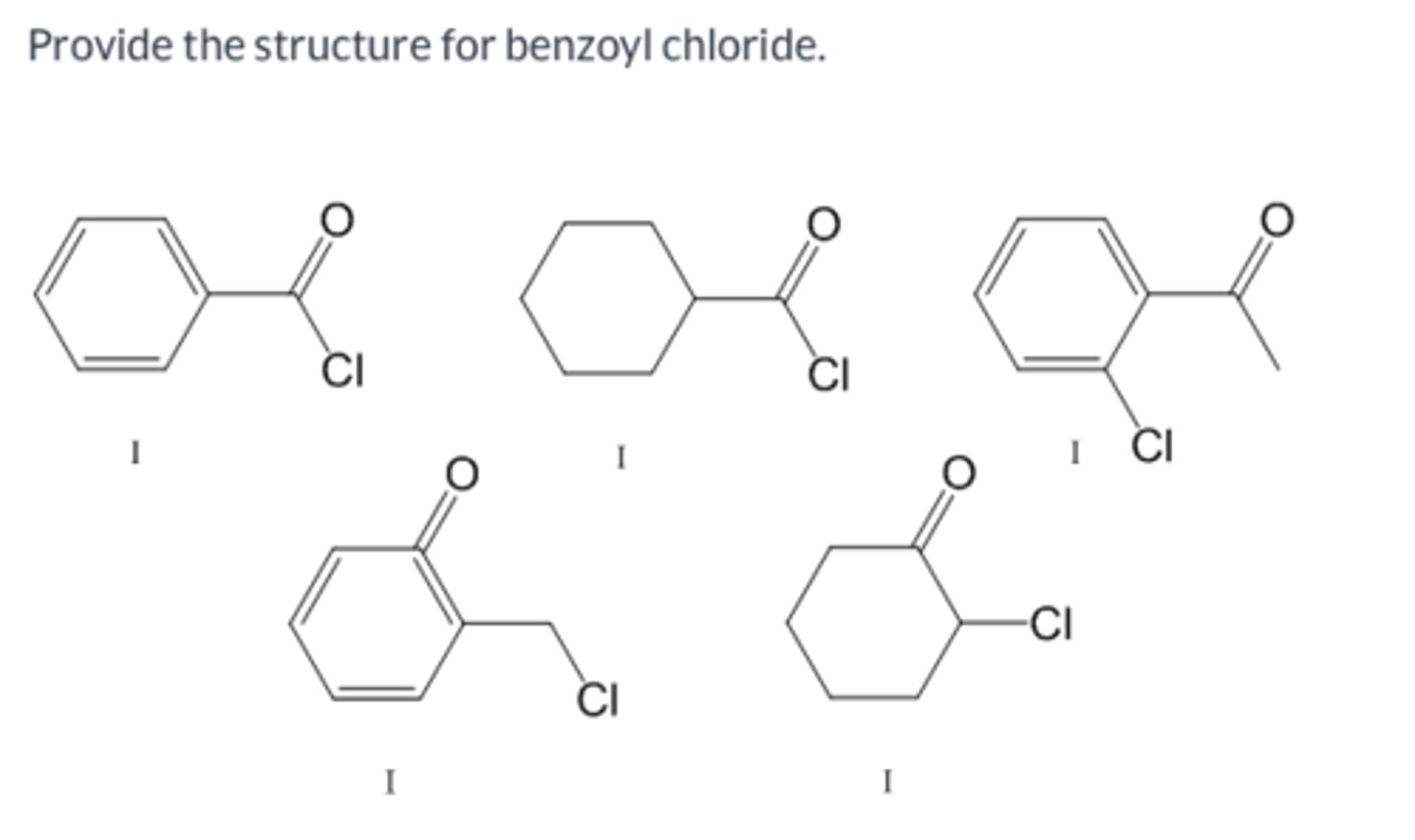
Provide the structure for benzoyl chloride.
I
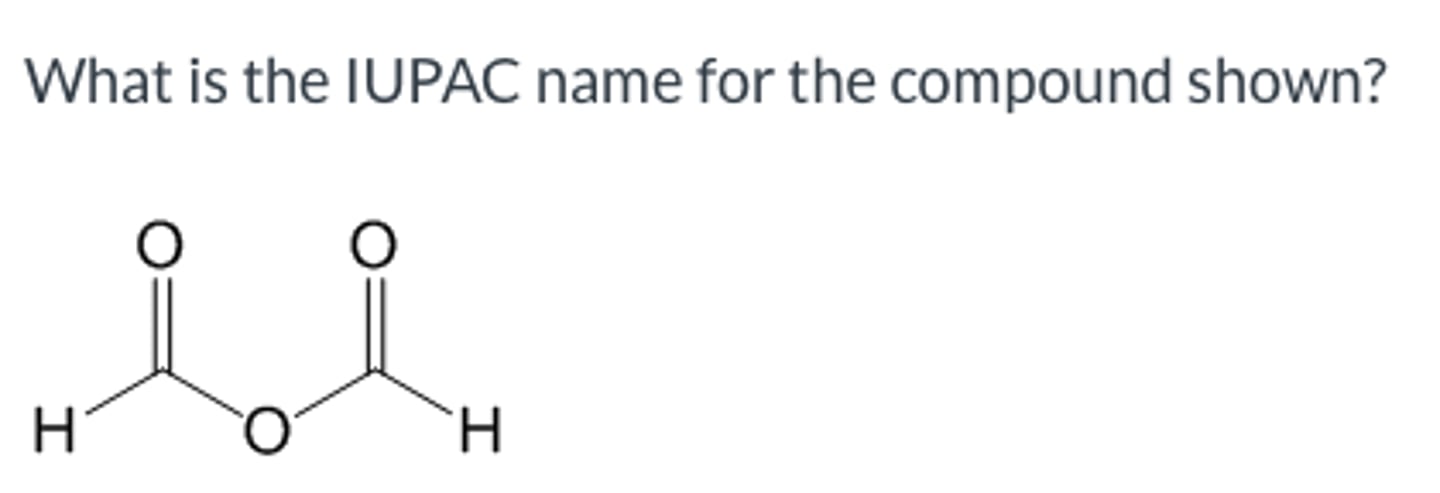
What is the IUPAC name for the compound shown?
formic anhydride

What is the common name for the compound shown?
formic anhydride

What is the IUPAC name for the compound shown?
butanoic anhydride

What is the common name for the compound shown?
butyric anhydride
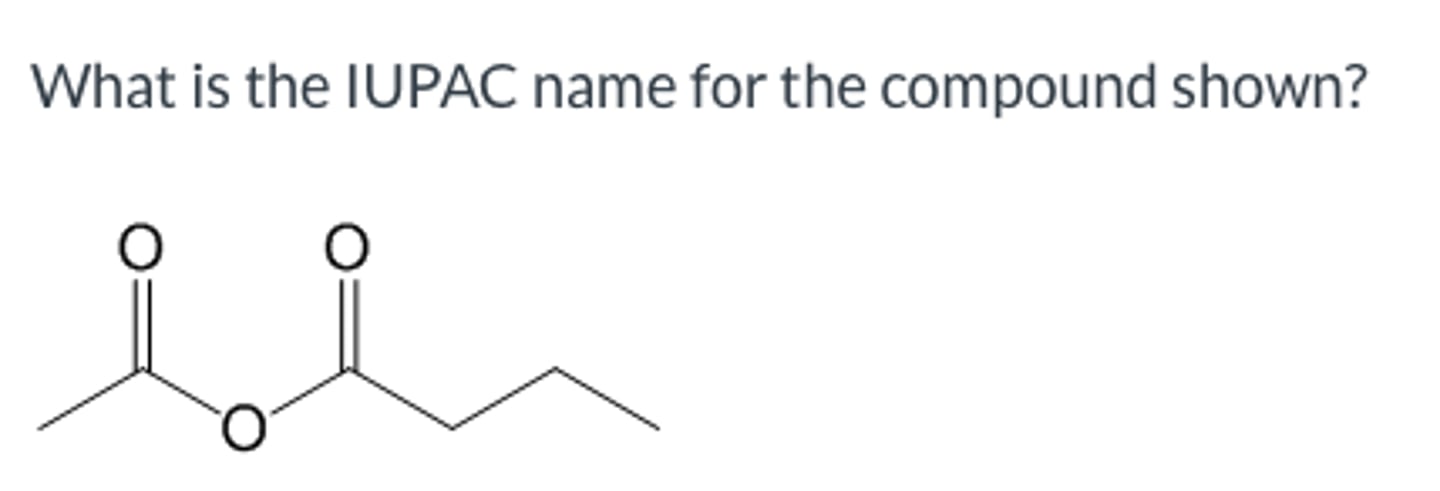
What is the IUPAC name for the compound shown?
butanoic ethanoic anhydride

What is the common name for the compound shown?
acetic butyric anhydride
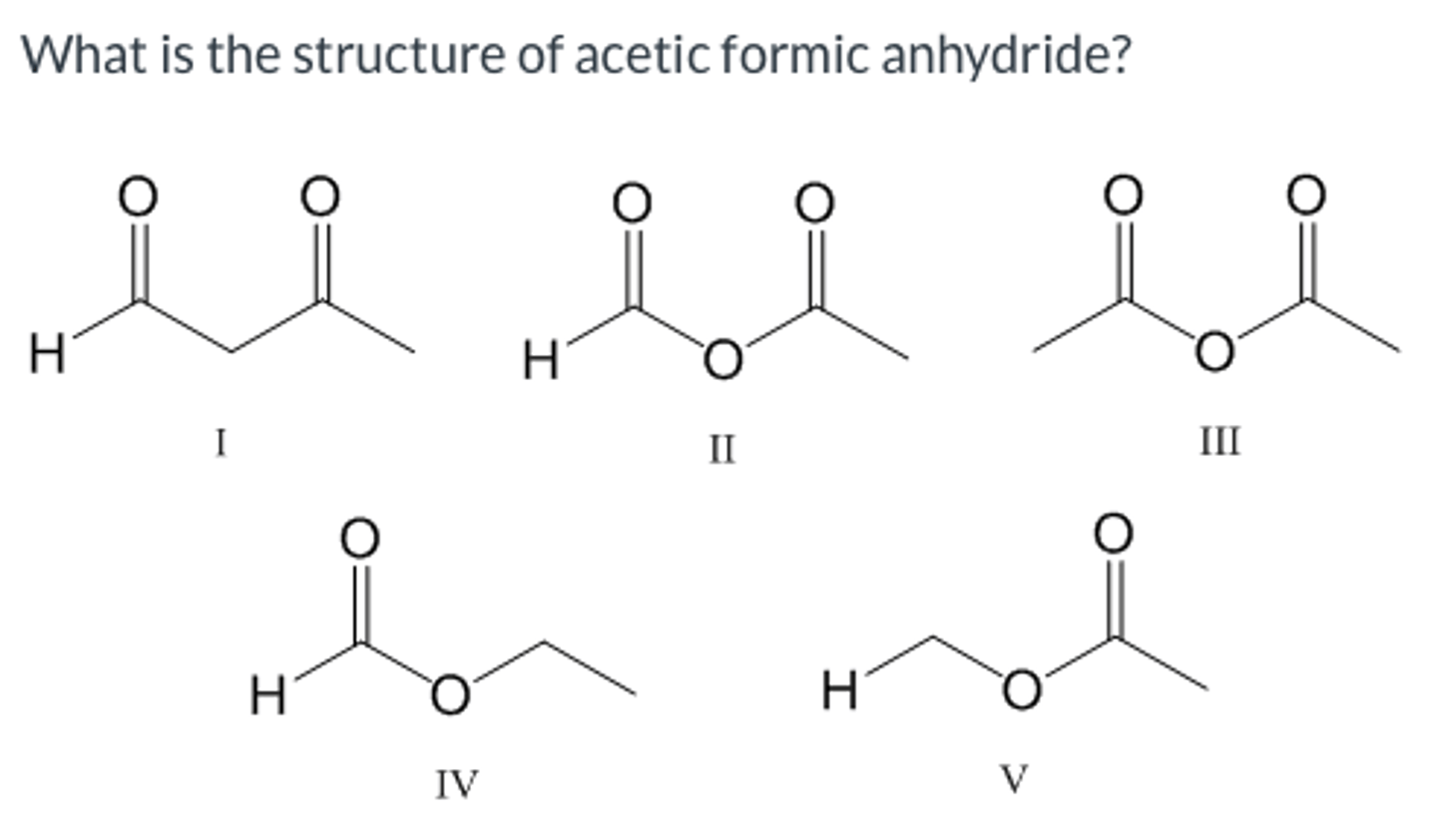
What is the structure of acetic formic anhydride?
II

What is the IUPAC name for the compound shown?
propanoic anhydride
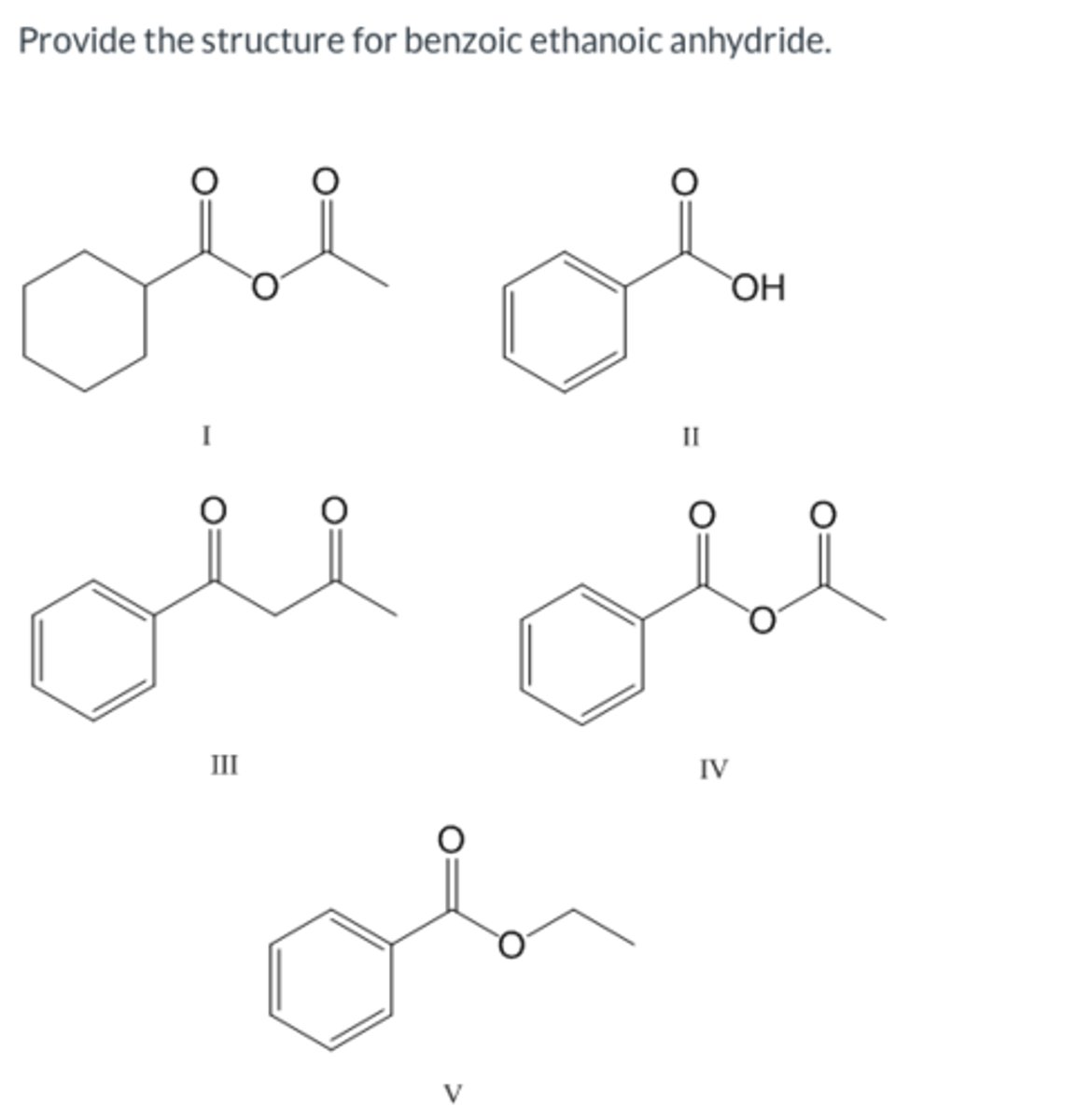
Provide the structure for benzoic ethanoic anhydride.
IV

What is the IUPAC name for the compound shown?
ethyl 3-methylpentanoate

What is the IUPAC name for the compound shown?
2-methylbutyl 3-methylbutanoate
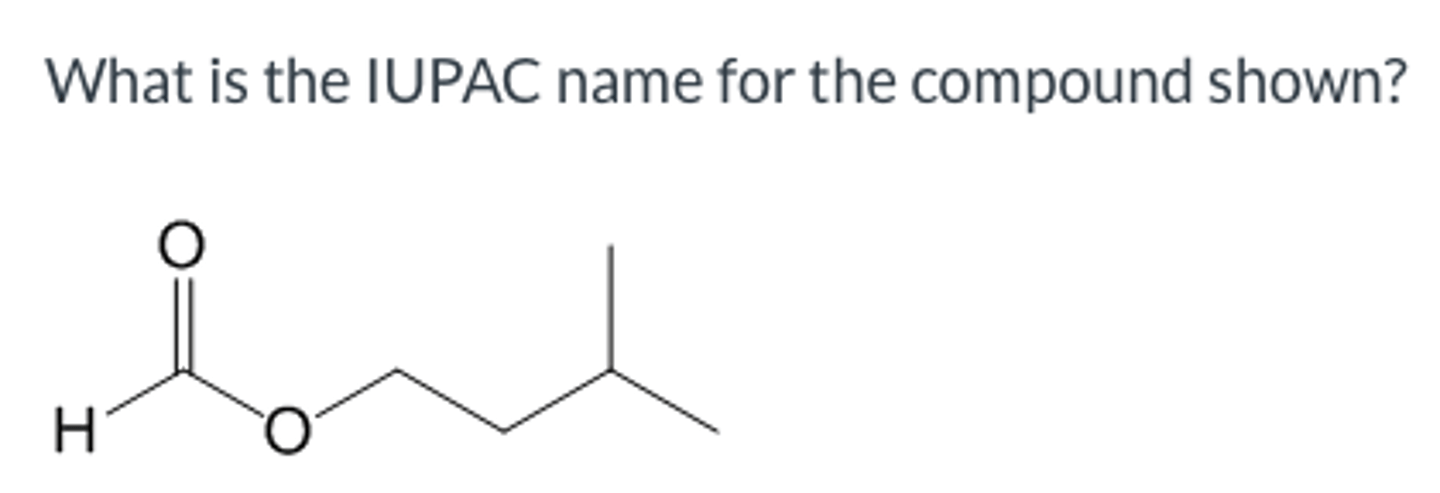
What is the IUPAC name for the compound shown?
3-methylbutyl methanoate

What is the common name for the compound shown?
isopentyl formate
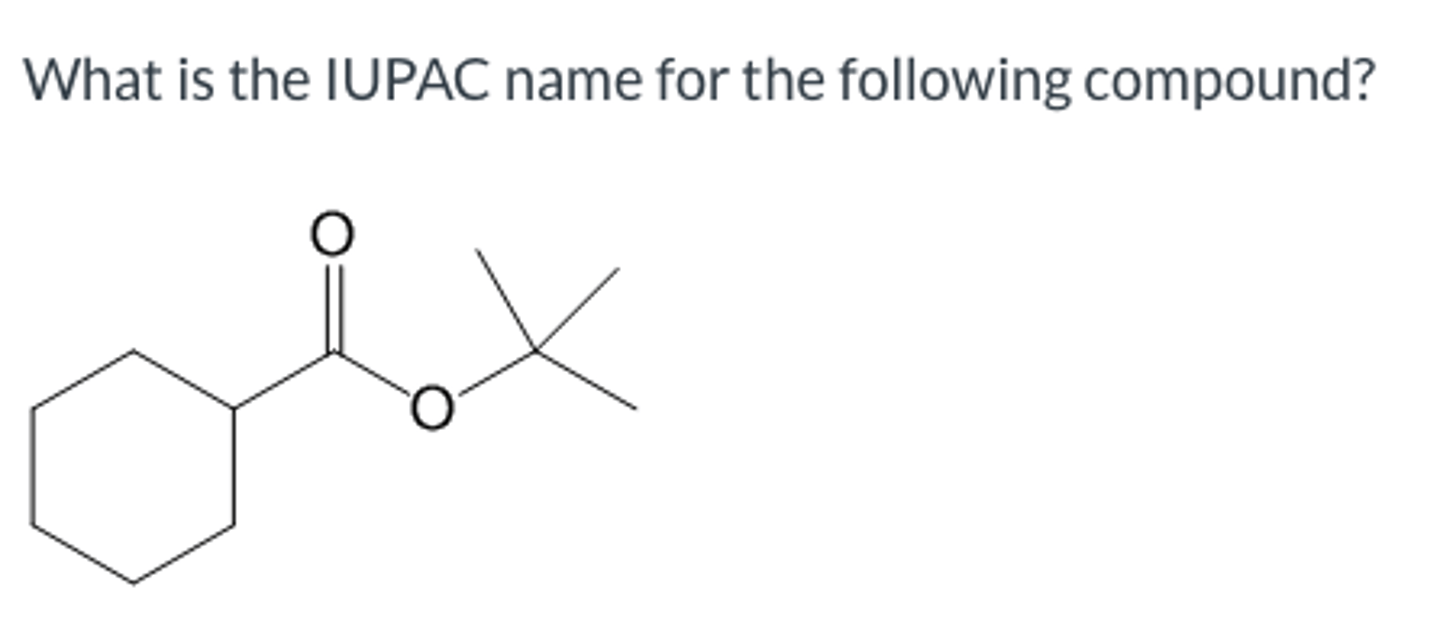
What is the IUPAC name for the compound shown?
t-butyl cyclohexanecarboxylate
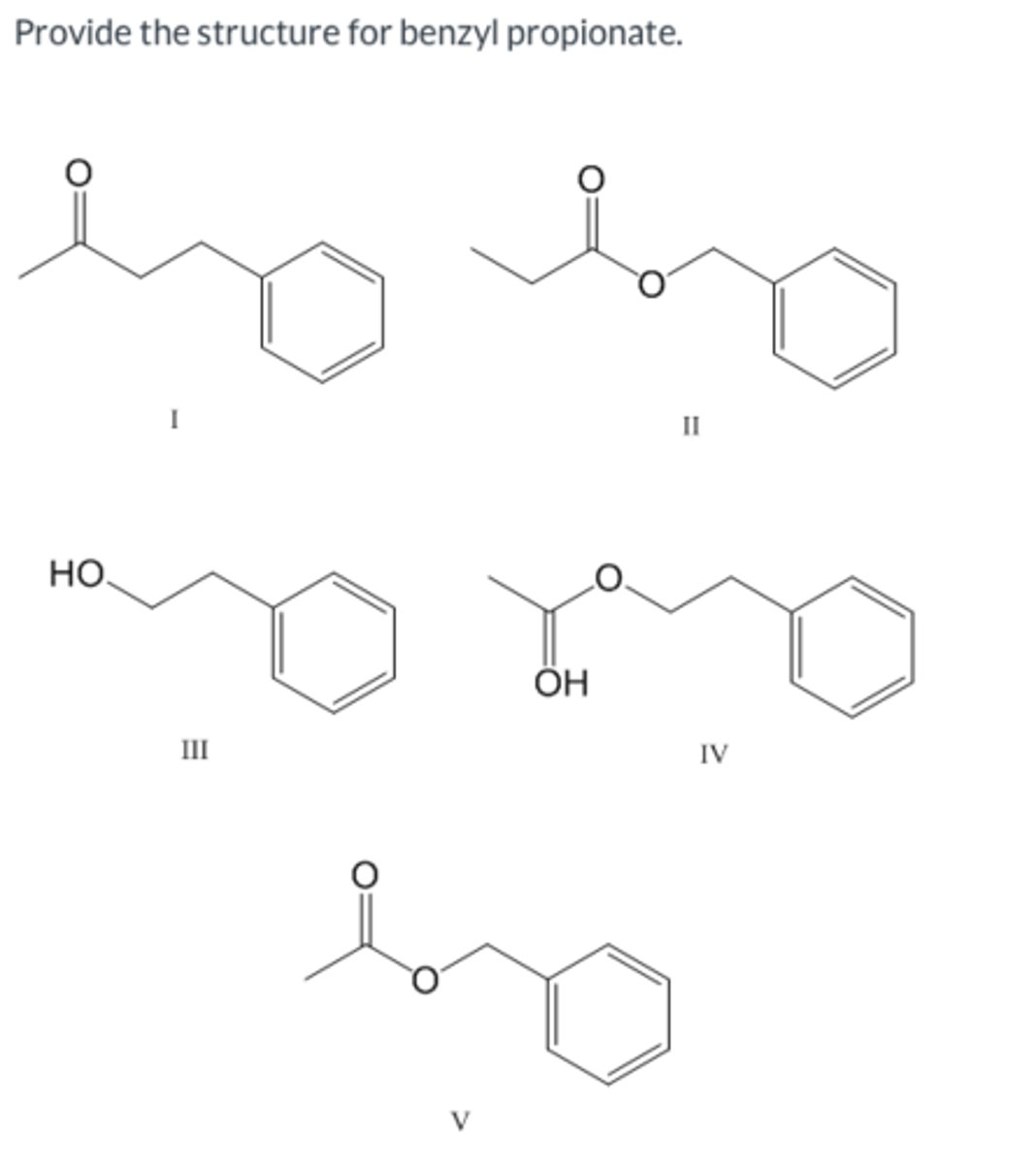
Provide the structure for benzyl propionate.
II
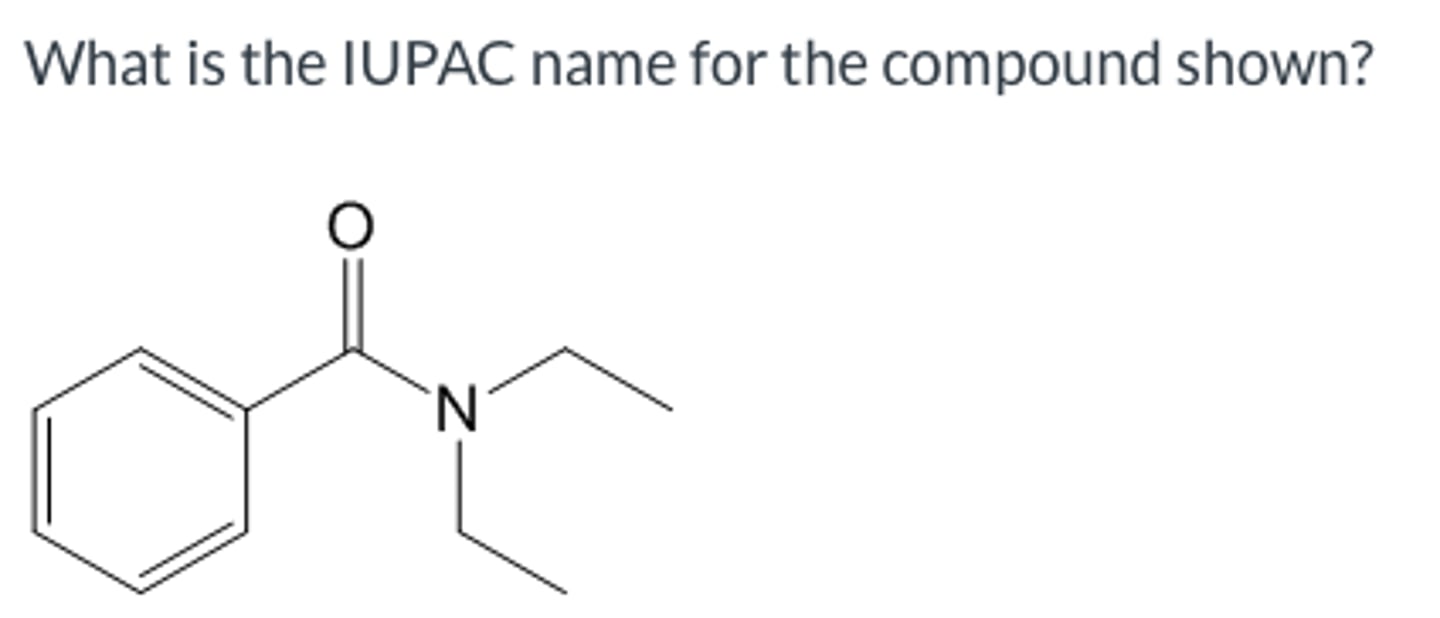
What is the IUPAC name for the compound shown?
N,N-diethylbenzamide
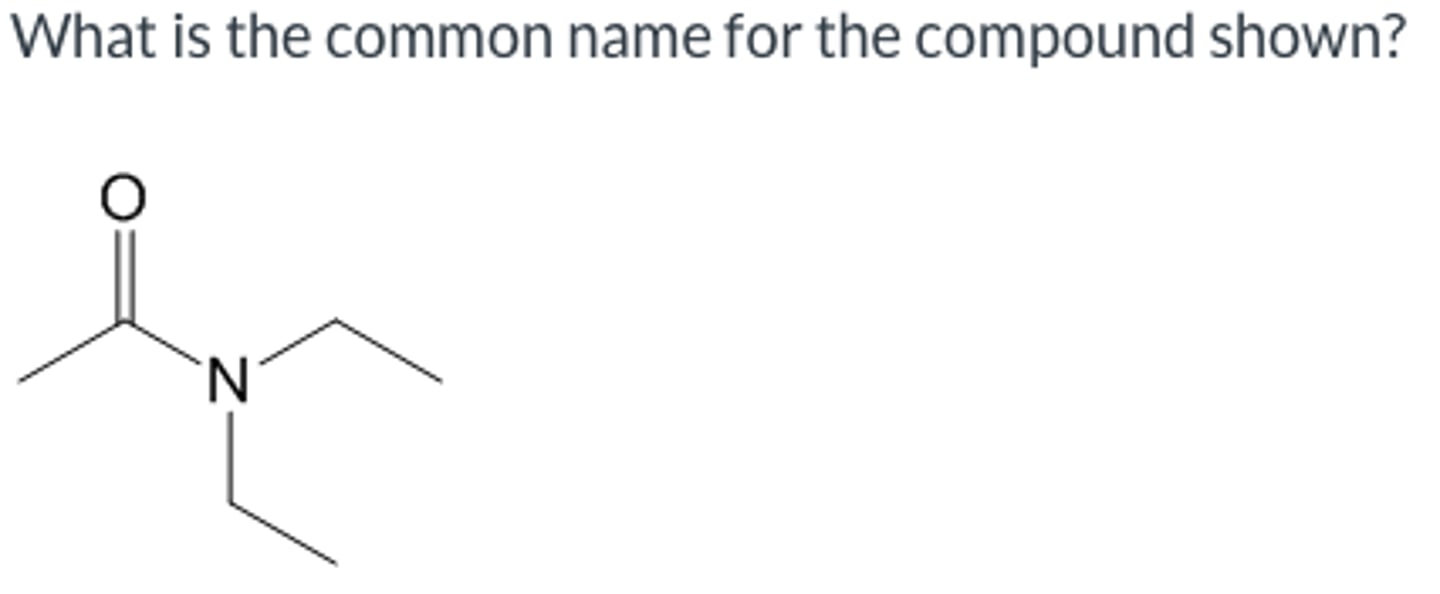
What is the common name for the compound shown?
N,N-diethylacetamide

What is the IUPAC name for the compound shown?
N,N-diethylethanamide
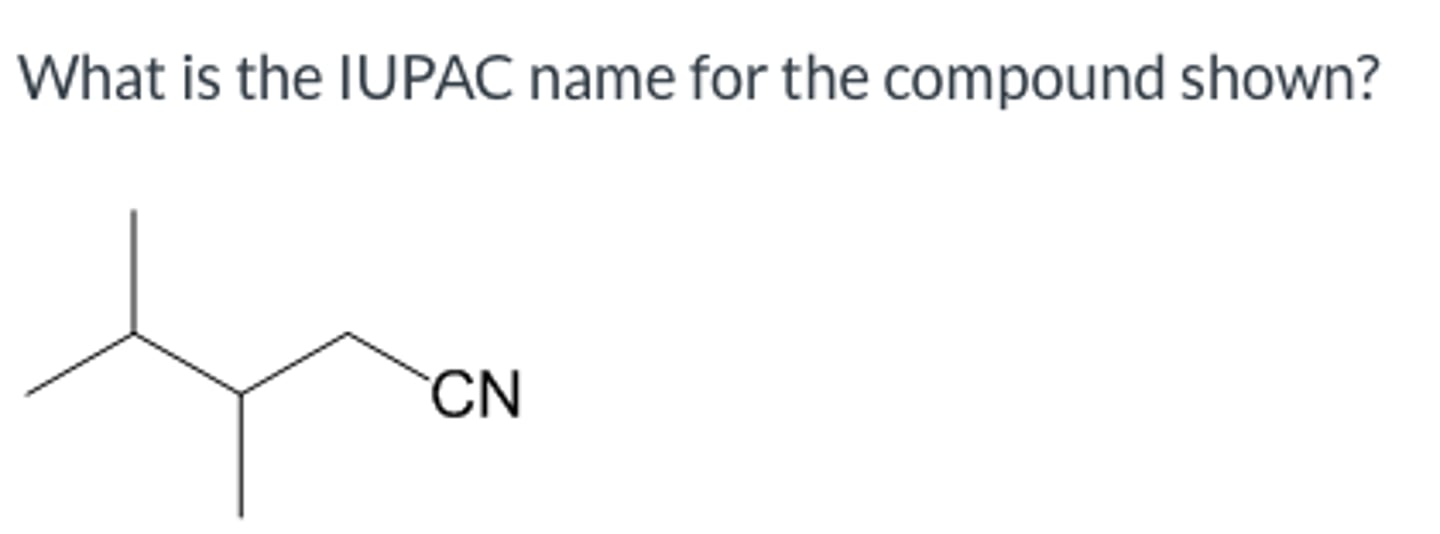
What is the IUPAC name for the compound shown?
3,4-dimethylpentanenitrile
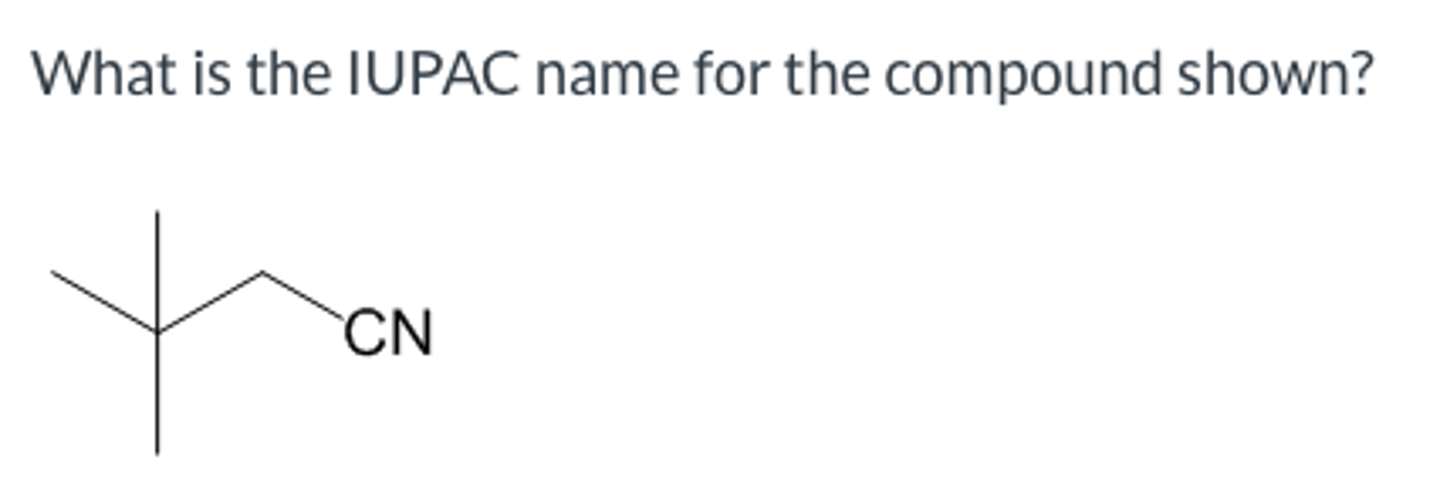
What is the IUPAC name for the compound shown?
3,3-dimethylbutanenitrile

What is the common name for the compound shown?
B,B-dimethylbutyronitrile
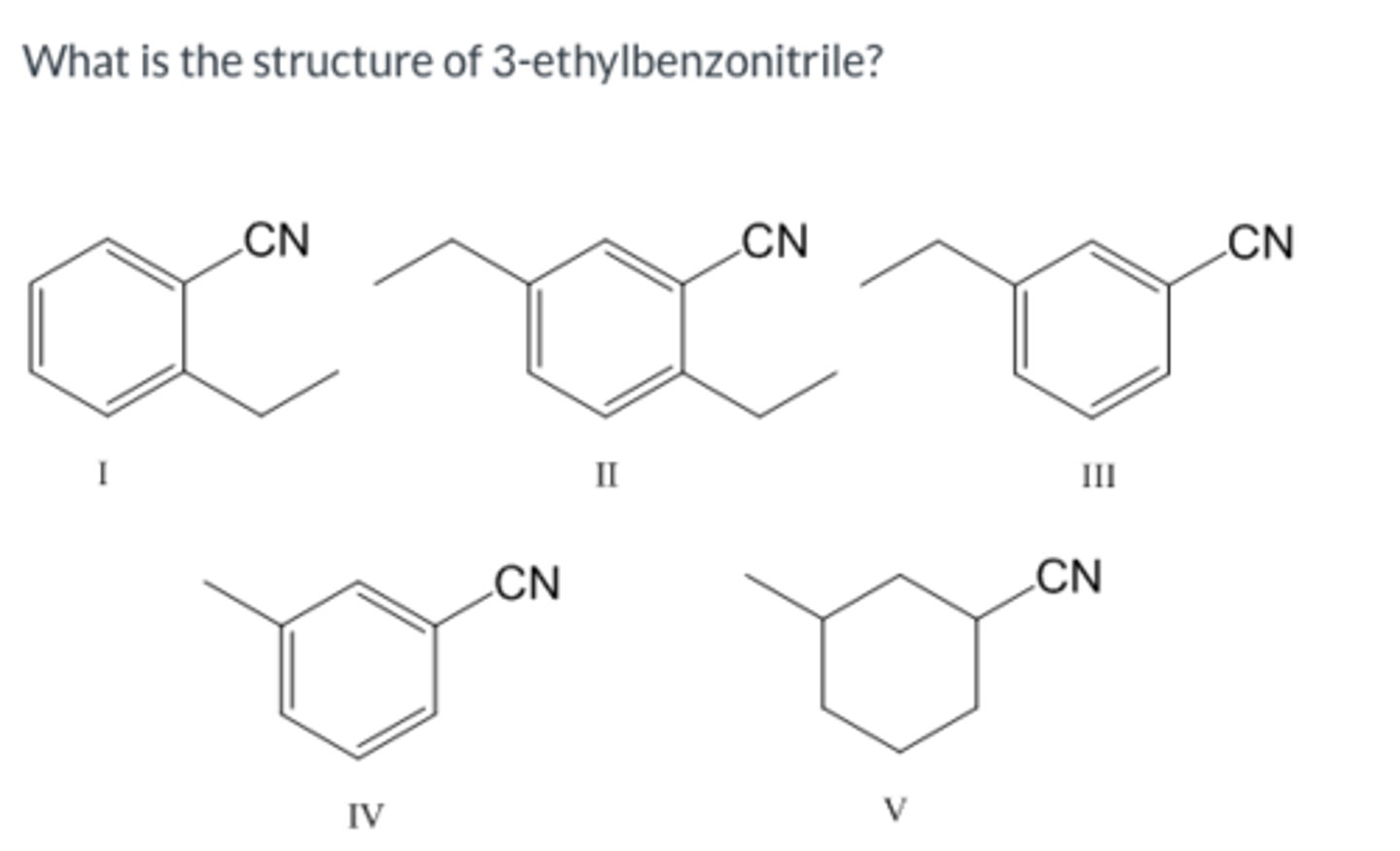
What is the structure of 3-ethylbenzonitrile
III
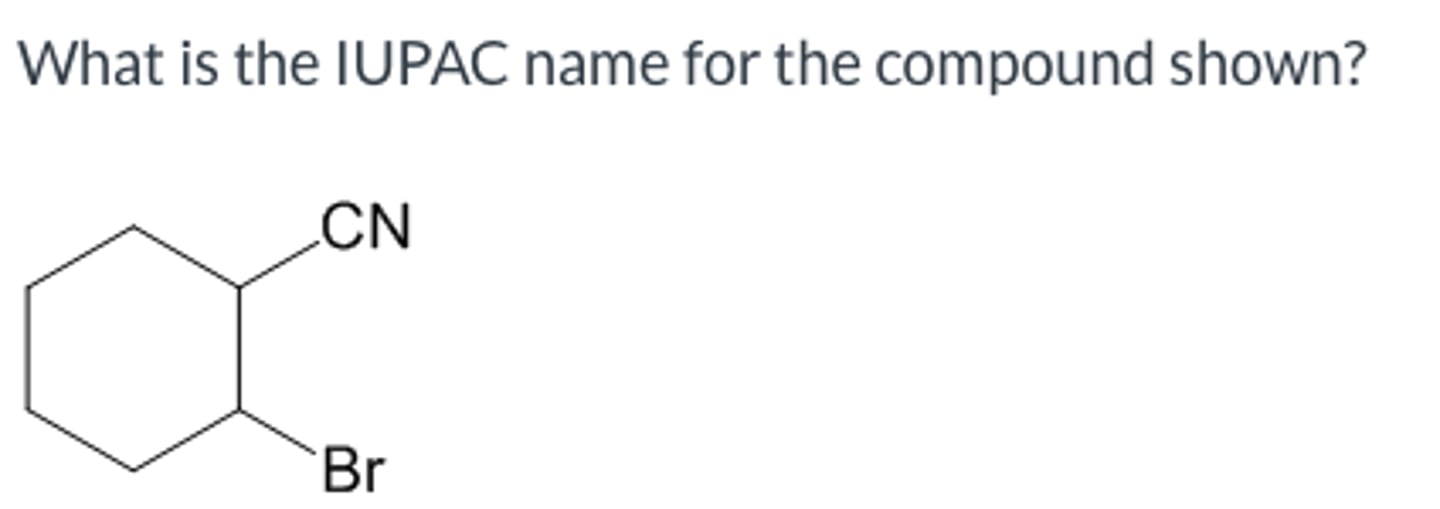
What is the IUPAC name for the compound shown?
2-bromocyclohexanecarbonitrile

Rank the following carboxylic acid derivatives in decreasing order (most to least) of reactivity towards nucleophilic substitution.
IV > I > III > II
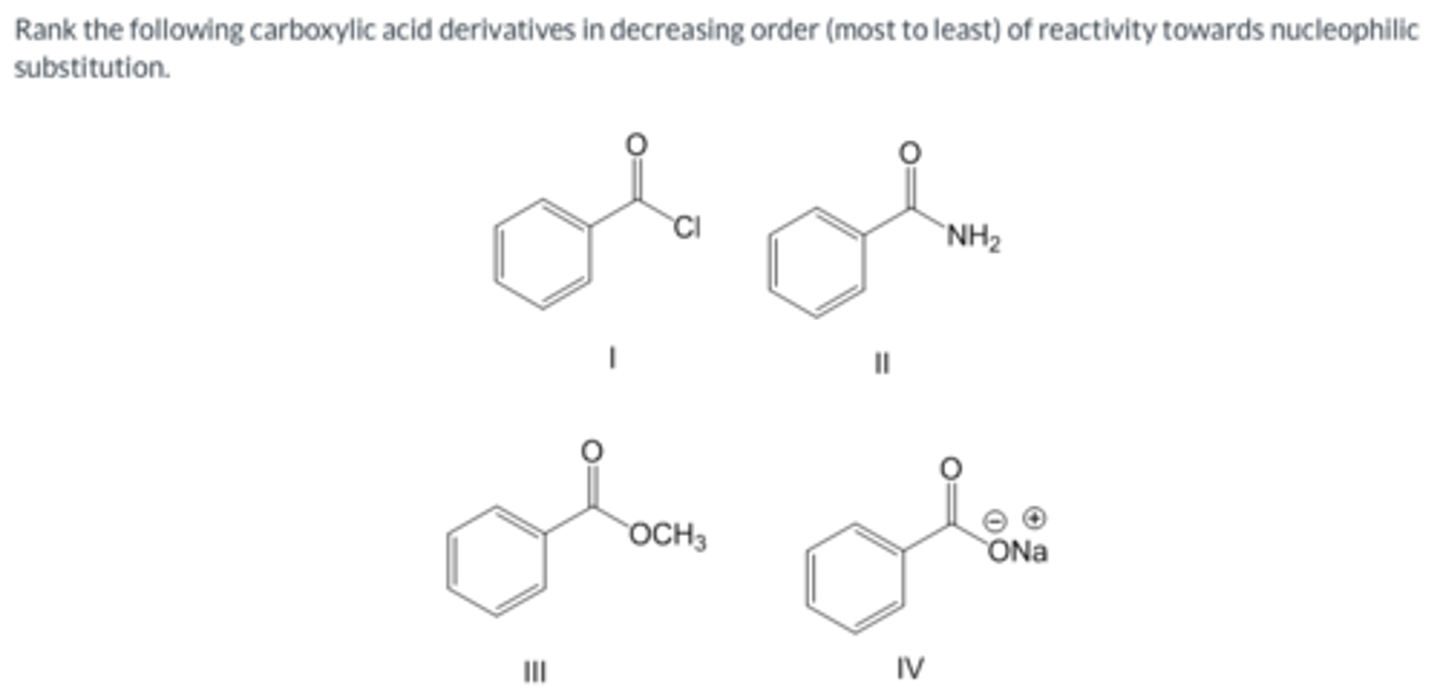
Rank the following carboxylic acid derivatives in decreasing order (most to least) of reactivity towards nucleophilic substitution.
I > III > II > IV
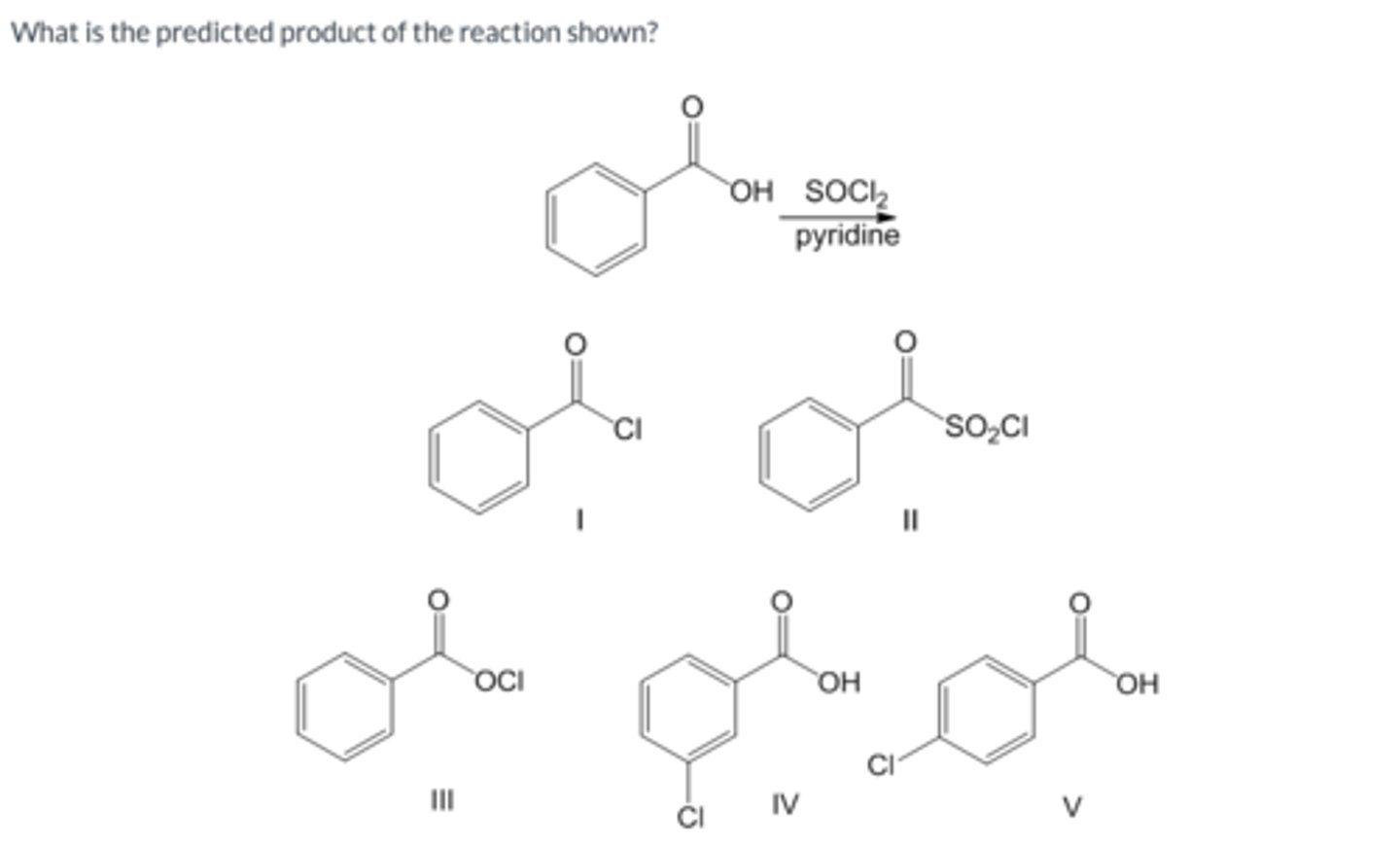
What is the predicted produ ct of the reaction shown?
I

What is the predicted product of the reaction shown?
3-methylbutanoyl chloride

What is the predicted product of the reaction shown?
ethyl 3-methylbutanoate
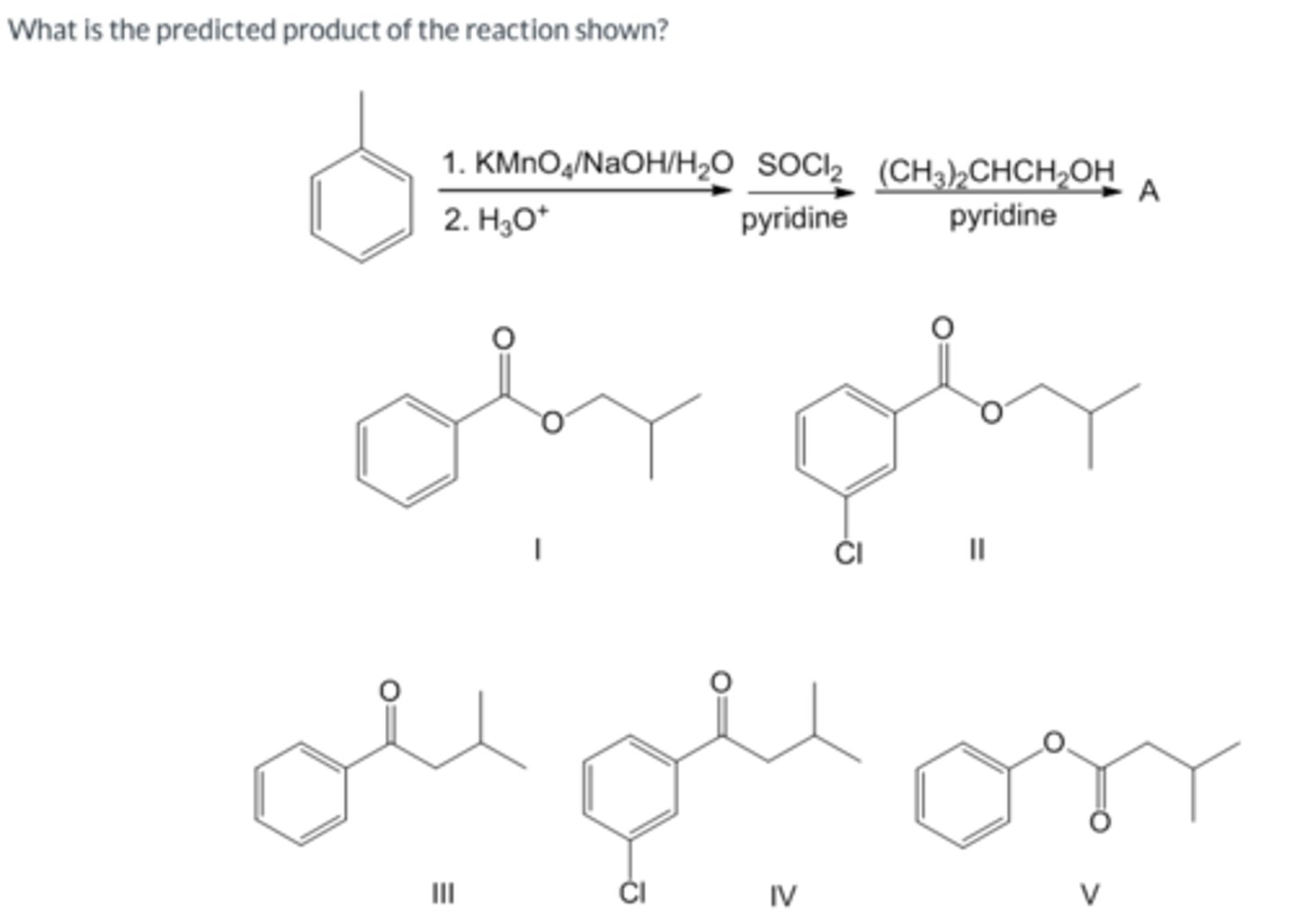
What is the predicted product of the reaction shown?
I
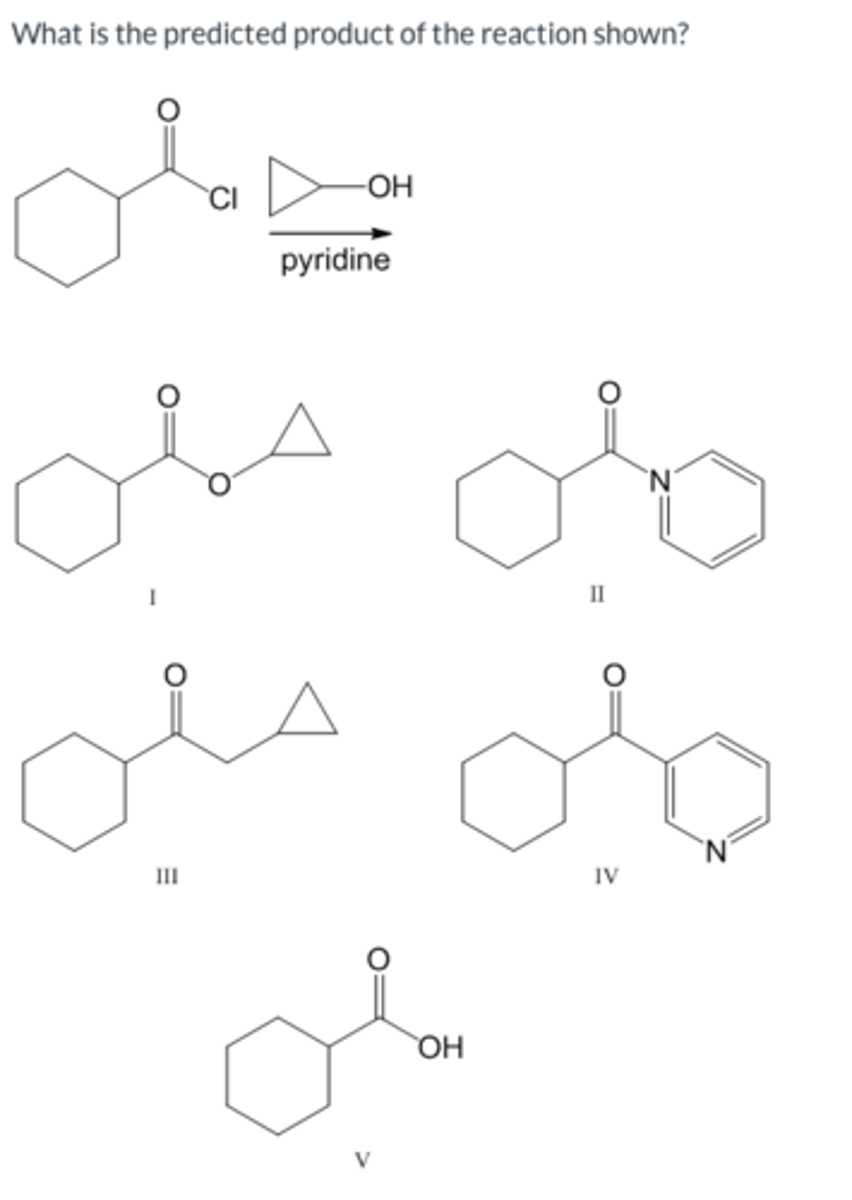
What is the predicted product of the reaction shown?
I

What is the predicted product of the reaction shown?
IV

What reagents are necessary to carry out the conversion shown?
-CH3Li
-CH3MgBr
-(CH3)2CuLi
-Mg/ether;CH3Br
-CH3OH
(CH3)2CuLi
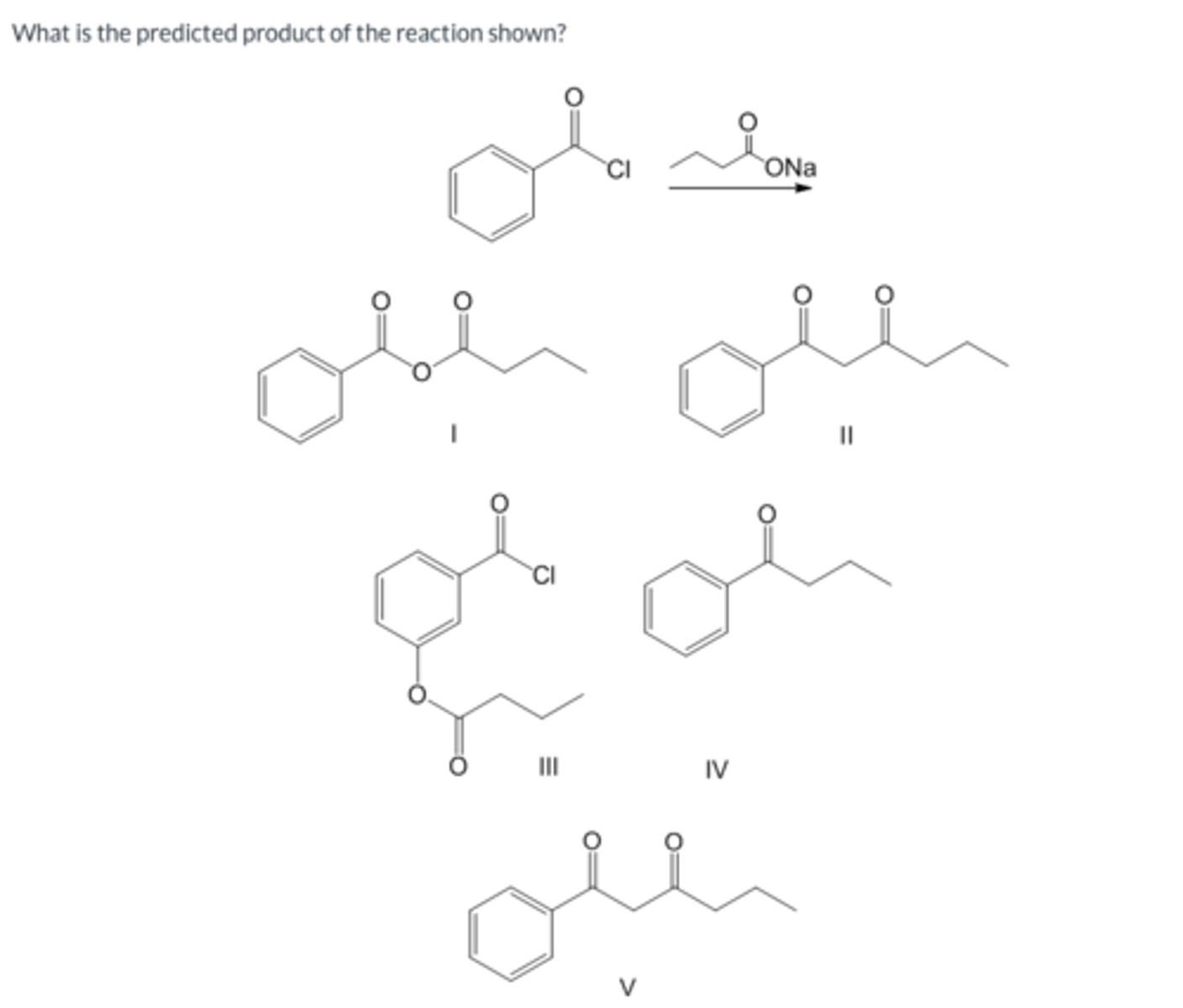
What is the predicted product of the reaction shown?
I
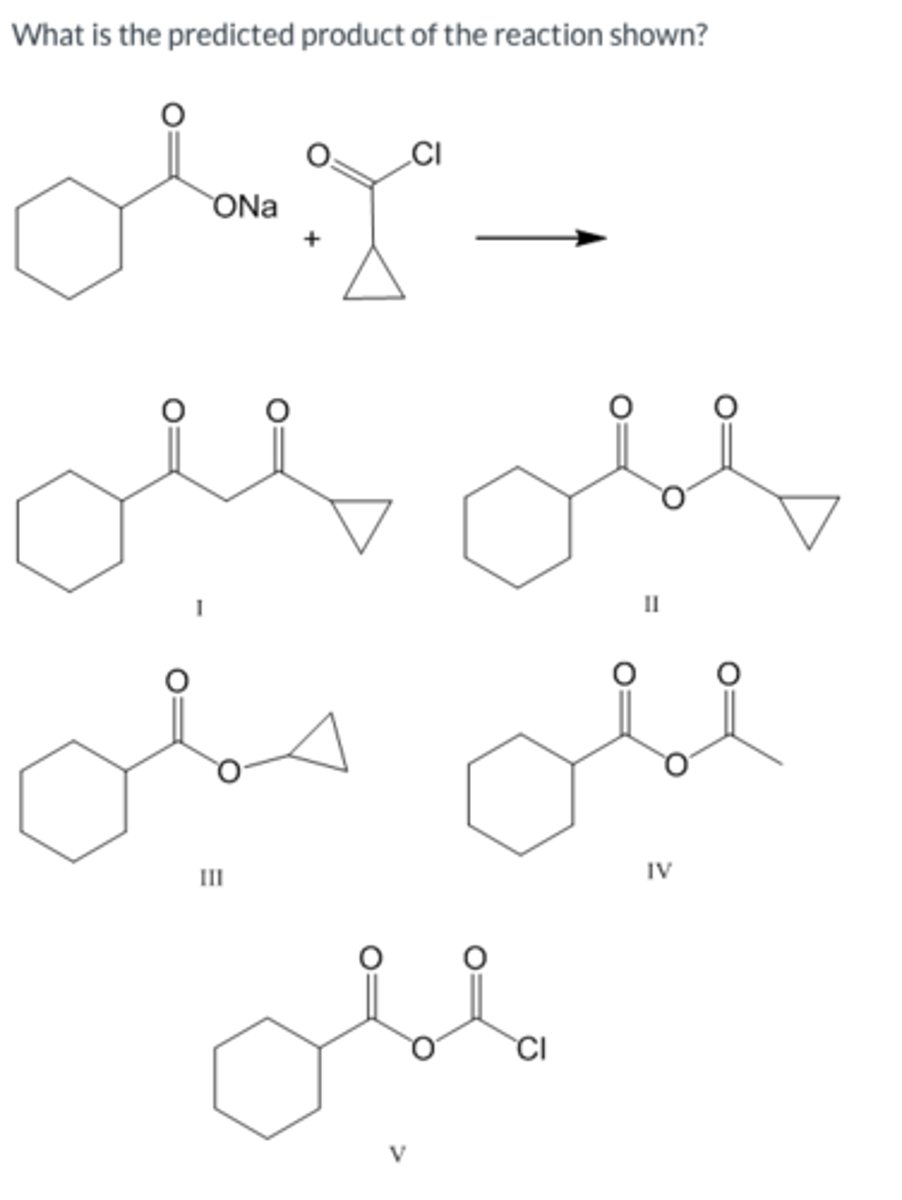
What is the predicted product of the reaction shown?
II
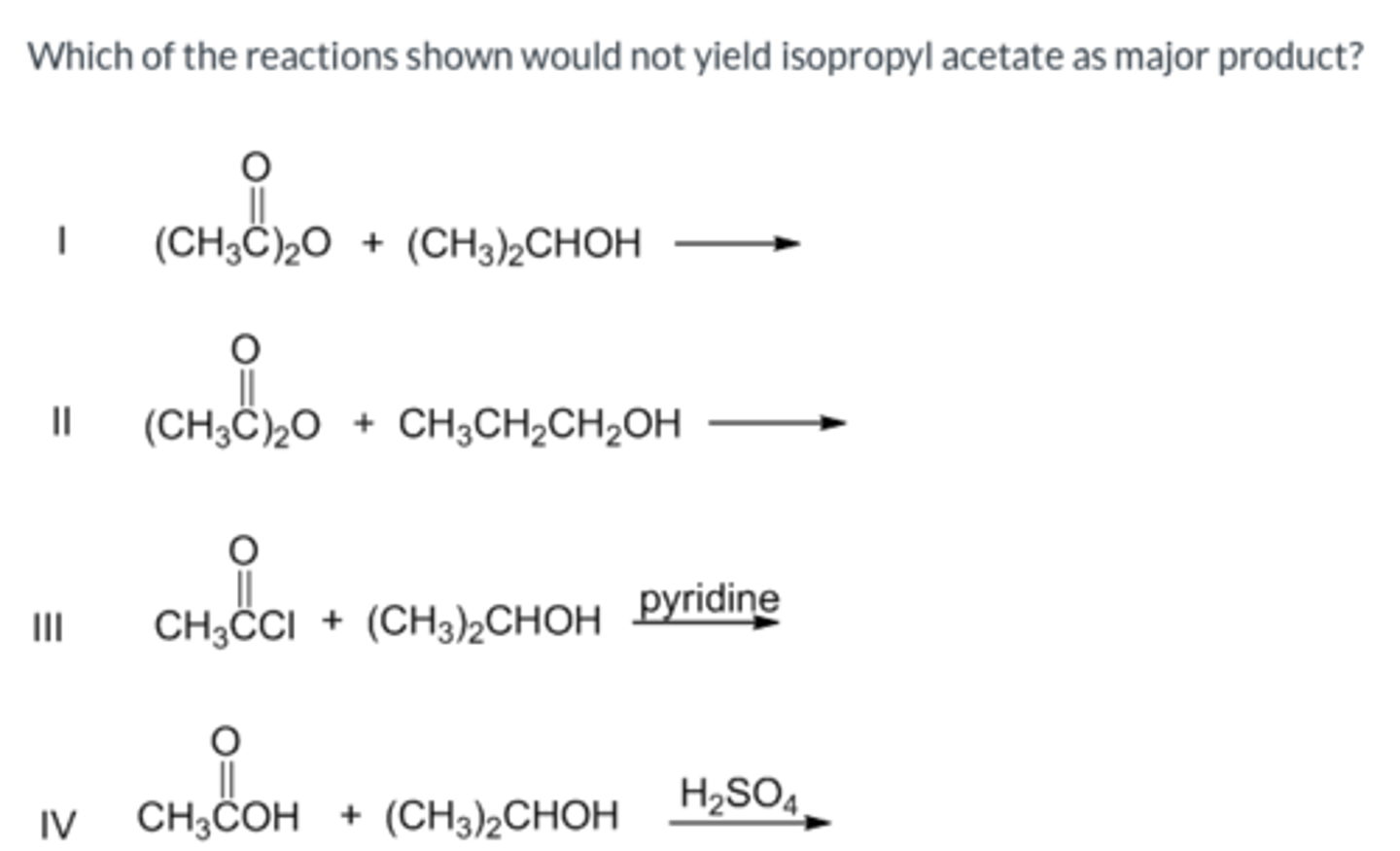
Which of the reactions shown would not yield isopropyl acetate as major product?
II
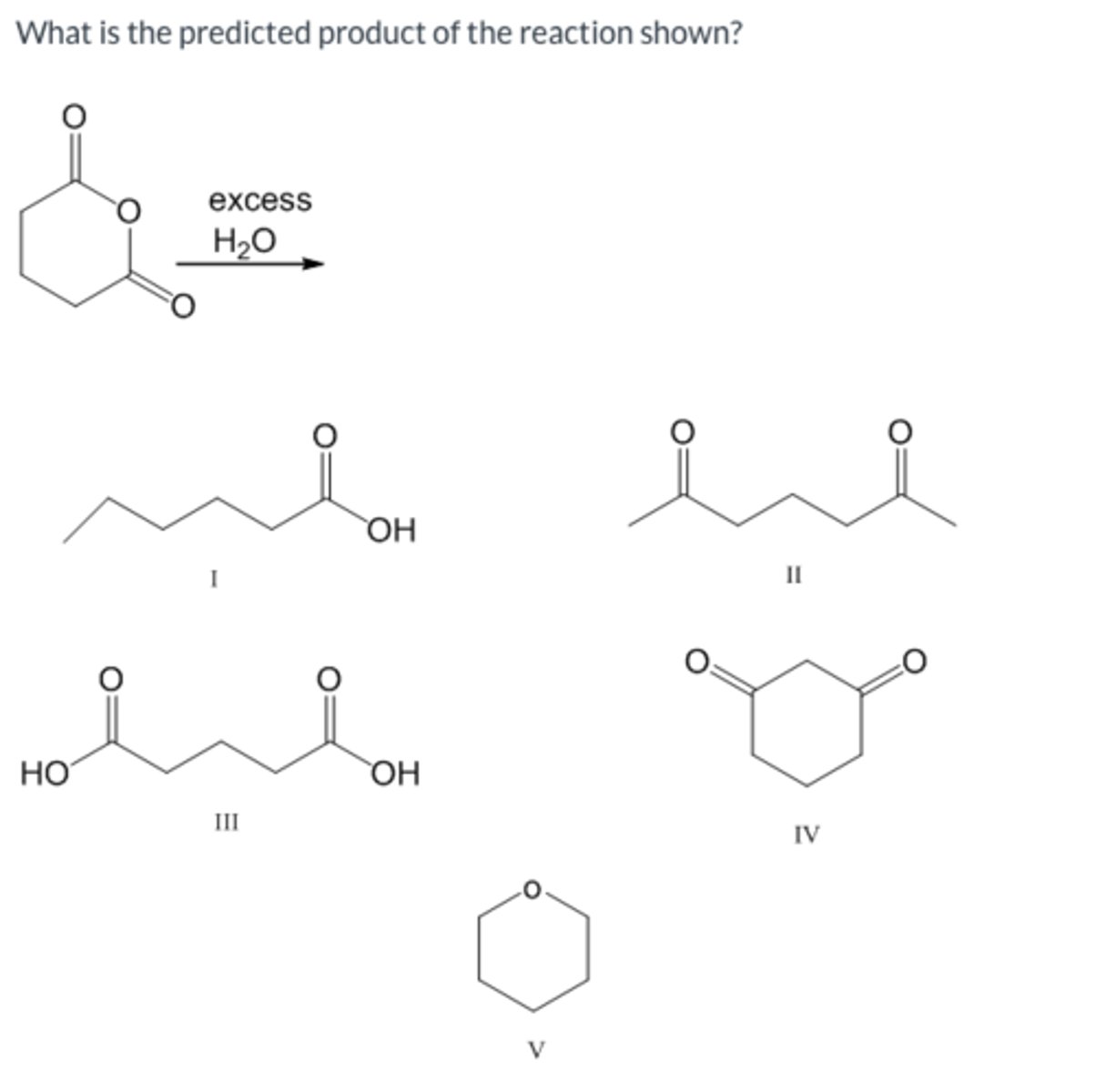
What is the predicted product of the reaction shown?
III
![<p>What reagent is necessary to carry out the conversion shown?</p><p>-SOCl2</p><p>-CH3Br</p><p>-CH3CH2MgBr</p><p>-LiAlH4</p><p>-[(CH3)2CH]2CuLi</p>](https://knowt-user-attachments.s3.amazonaws.com/62daf76d-08c2-4268-b35e-70ed1f34da31.jpg)
What reagent is necessary to carry out the conversion shown?
-SOCl2
-CH3Br
-CH3CH2MgBr
-LiAlH4
-[(CH3)2CH]2CuLi
[(CH3)2CH]2CuLi
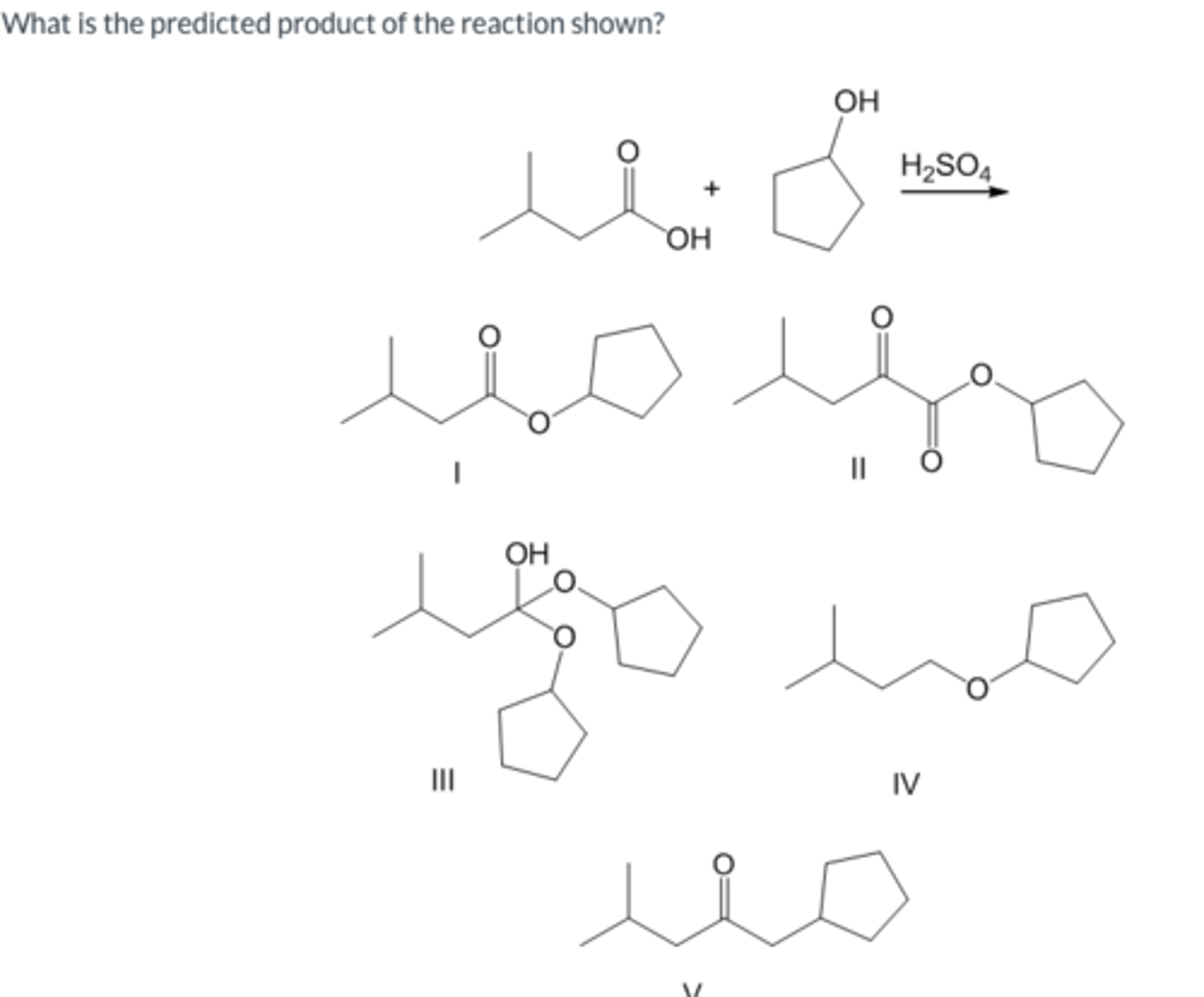
What is the predicted product of the reaction shown?
I

What reagents are necessary to carry out the conversion shown?
A. NaBH4/CH3OH
B. Na/NH3
C. 1. LiAlH4 2. H3O+
D. H3O+/heat
E. A and C
1. LiAlH4 2. H3O+
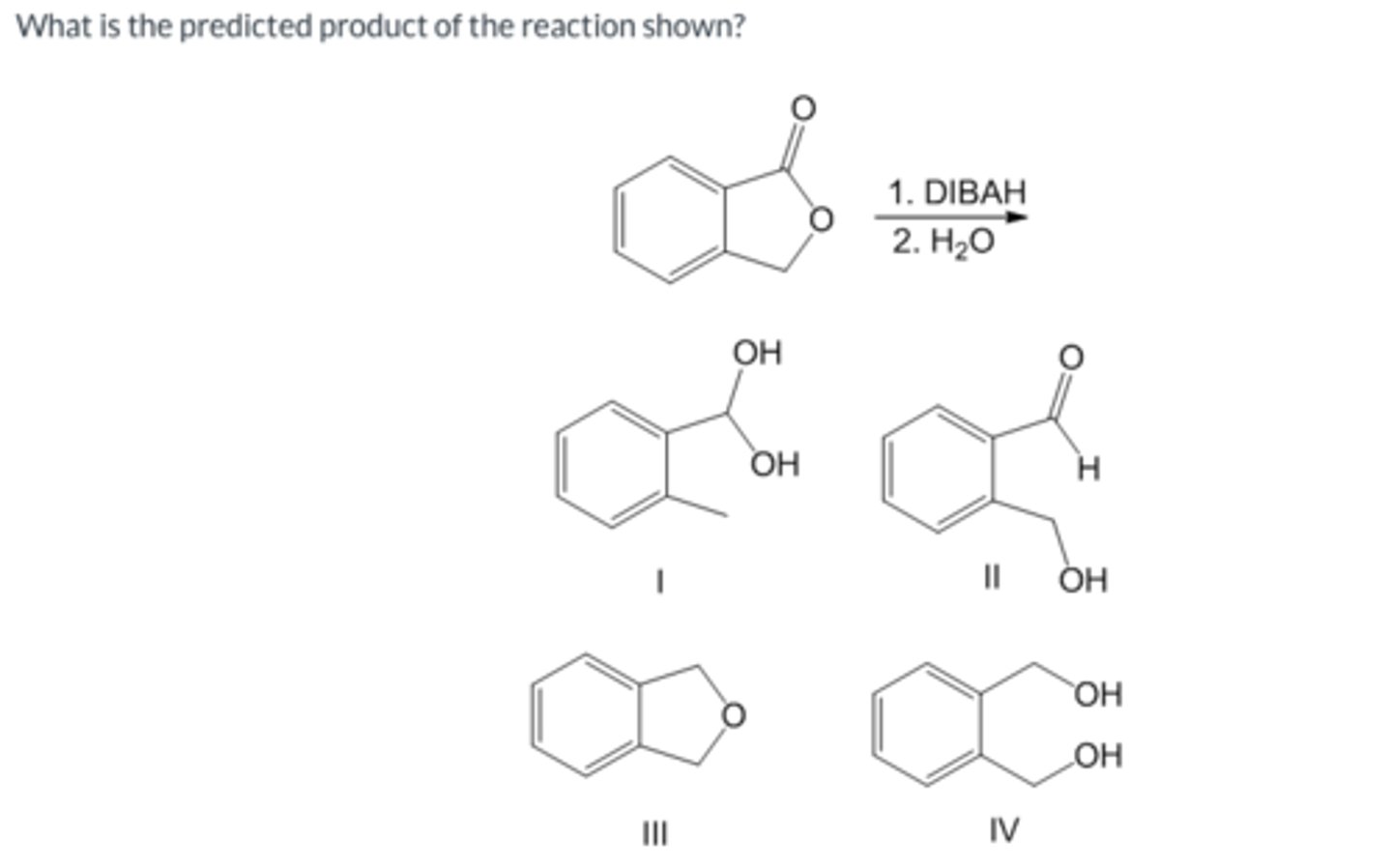
What is the predicted product of the reaction shown?
II

What is the predicted product of the reaction shown?
IV

What reagents are necessary to carry out the conversion shown?
-H3O+, heat; CH3CH2OH, H2SO4
-H3O+; CH3OH, H2SO4
-SOCl2; heat; CH3CH2OH, H2SO4
-LiAlH4; SOCl2; CH3CH2OH, H2SO4
-H2SO4, heat; CH3, H2SO4
H3O+, heat; CH3CH2OH, H2SO4

What reagents are necessary to carry out the conversion shown?
-NH3; H3O+
-LiAlH4; H2O
-H2SO4; H3O+
-LiAlH4; NH3
-LiAlH4; KCN
LiAlH4; H2O

What is the predicted product of the reaction shown?
III